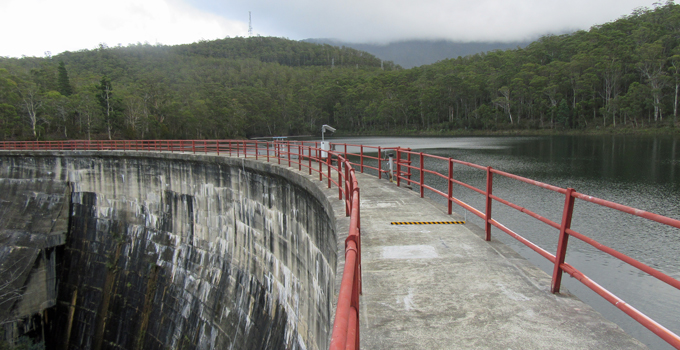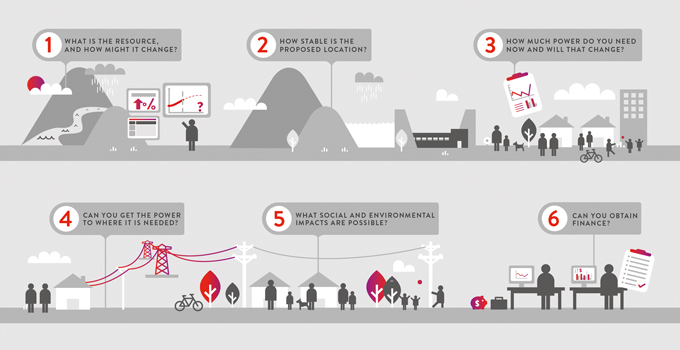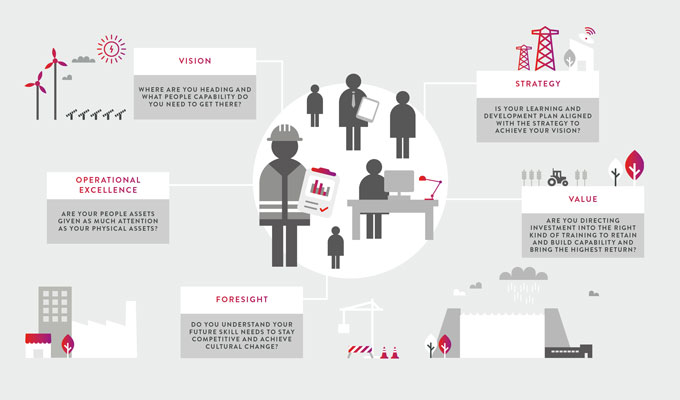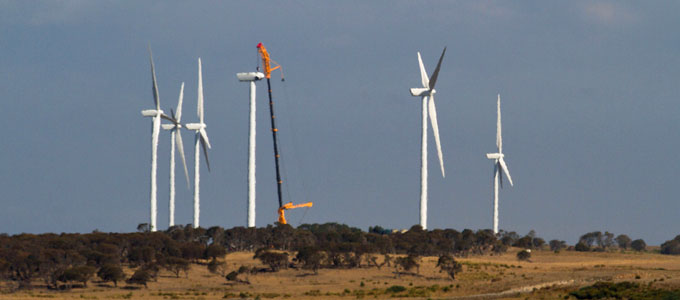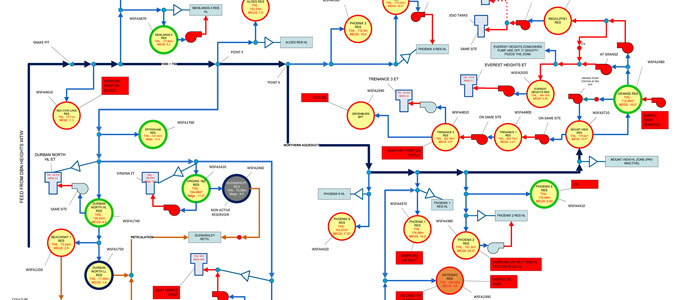Portfolio risk assessment takes dam safety programs to the next level
A portfolio risk assessment allows owners of dams and other water assets to see the bigger picture of how to prioritise their efforts and resources to achieve the best safety result across their whole portfolio.
Constraints on budgets and resources remain key challenges for owners of dams and water assets, especially those with a large asset portfolio, as they attempt to reduce the risk to communities to an ‘as-low-as-reasonably-practicable’ level. Without a tool to prioritise safety works, it is impossible to use limited resources most effectively.
Dam owners have often overlooked the importance of prioritising their dam safety activities, resulting in resources being allocated equally to all dams or allocated randomly to selected dams.
For example, the traditional indexing method, which uses a standards-based deterministic approach to review deficiencies at a dam, does not look at the consequences of those deficiencies, so it fails to inform the dam owner of the associated dam safety risk.
Using a method such as this can often lead to defensive design, cost-ineffectiveness, blind upgrade, or a generic surveillance and monitoring program across all dams, and does not greatly assist the dam owner in managing the dam safety risk. Ultimately, resources may be wasted on low-risk dams, rather than used appropriately on dams with high safety risks.
Current best practice involves a risk-based probabilistic approach and takes into account the risk of failure of each dam to prioritise dam safety works. However, for a large dam portfolio, a full detailed risk assessment for all dams can be very costly and time consuming.
So, how can an owner of a portfolio of dam assets assess safety and prioritise investment without unnecessary effort or expense? The answer is portfolio risk assessment.
How portfolio risk assessment works
A portfolio risk assessment (PRA) is often a starting point for an effective dam safety program. It is not a detailed risk assessment of any particular dam, but an affordable high-level assessment at the portfolio level that presents to the dam owner the relative risk position of all dams. This enables the dam owner to better prioritise ongoing dam safety works and develop investment strategies.
In a PRA, the safety risk posed by each dam in the portfolio is usually assessed based on historically available information as well as information gathered in a workshop-type environment by an expert team of various disciplines. Key failure modes of each dam are identified, and the risks are quantified based on available information.
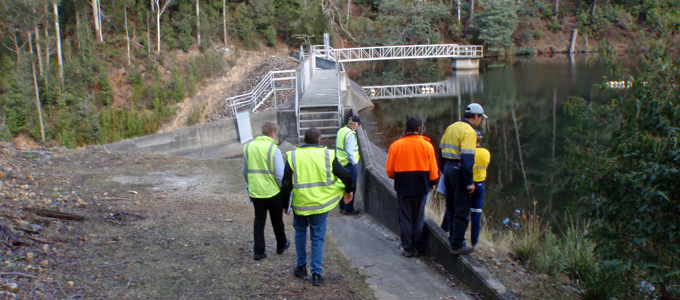
The key objective as a first step is to determine the first-pass risk position of the dams, followed by identifying any information gaps, strategy and priority to close these gaps. Output from a PRA can be tailored to suit organisational requirements, with risk positions determined in terms of societal, financial and political risks.
Flow-on benefits of the PRA process
PRA has proven to be a cost-effective tool in revolutionising an effective dam safety program for many dam owners in Australia and worldwide. It provides flow-on benefits to dam owners in managing their dam assets. In particular:
- Providing high-level focus and ease of reporting: A PRA provides an overview and high-level visibility and understanding of the current risk profile of the dam assets. This allows the dam owner to better focus on key dam safety issues, and makes reporting to senior management easier.
- Understanding relative risk and prioritising action: Establishing the risk profiles of all dams in a single risk plot not only informs whether the risk position of each dam is tolerable in accordance with industry best practice and guidelines, but also allows an understanding of the risk position of each dam relative to the others. This provides an opportunity for the high safety risk dams to be targeted first for dam safety activities, and allows prioritisation of dam safety recommendations.
- Best use of resources and identifying quick wins: Understanding the relevant dam safety risk profile provides clear direction for appropriately using resources to target mitigation of key risk items rather than attempting to implement all recommended actions at once, which is often not achievable. This also provides the opportunity to identify ‘quick win’ remedial works which may be less expensive yet significantly reduce risk.
- Ensuring key documentation is in place: Understanding the relevant safety risks of the dams also obliges the dam owner to ensure key documentation is in place, particularly for high safety risk dams. This may include dam safety emergency plans, operations and maintenance manuals, dam data books, hydraulic data, dam break inundation maps, and geotechnical reports.
- Reviewing surveillance and monitoring practices: A PRA provides an opportunity to review the existing dam surveillance and monitoring practice, and adopt a cost-effective risk-based approach to target the key failure modes rather than a blanket approach. As an example, a dam with a high risk of piping may require telemetered V-notches, whereas one without a high risk of piping may only require manually read V-notches or visual observations. In addition, the inspection frequency for dams with relatively low risk positions may be reduced, freeing up resources for use on dams with high safety risk.
- Improving dam safety emergency planning: An understanding of a dam’s key failure modes and failure consequences also allows improvement of critical dam safety information (e.g. event triggers, emergency evacuation), resulting in improved emergency planning.
Updating the PRA for continuous improvement
The outcome of a PRA would inform the knowledge gaps for any particular dams, and the necessary future works and investigations required to close those gaps. Following additional investigations, studies, remedial or upgrade works as a result of the initial PRA, it is good practice to update the PRA to review the portfolio risk and adjust the dam safety management strategy to achieve continuous improvement.
This will not only help dam owners to plan and prioritise their resources appropriately, but will also demonstrate to the regulator that an effective dam safety program is being implemented, which meets compliance requirements as well as industry best practices.
If you would like to discuss how Entura can assist you with assessing your dam risks through a portfolio risk assessment program, or apply the same PRA process to other key assets, please contact Shao Ng on +61 3 6245 4141 or Phillip Ellerton on +61 439 010 172.
About the authors
Shao Ng is a Senior Civil Engineer at Entura and has more than 16 years of experience in civil and dam engineering in Australia and overseas. Shao has considerable experience in project management, dam design and construction, geotechnical investigations, inspections and surveillance reviews, emergency planning, and dam operation and maintenance, and is familiar with national and international dam safety standards, guidelines and local regulatory requirements. Shao also has extensive experience in dam PRA.
MORE THOUGHT LEADERSHIP ARTICLES
The art of solar grid connection
With 2020 and its renewable energy targets fast approaching, the race is on to deploy renewable energy developments in Australia. Efficient and right-sized grid connection can get projects moving quickly and ensure future productivity.
In our previous article, Overcoming potential roadblocks when developing a solar farm, we outlined four possible hurdles to successfully delivering a utility-scale solar PV energy project. One of these potential blockers is the grid connection.
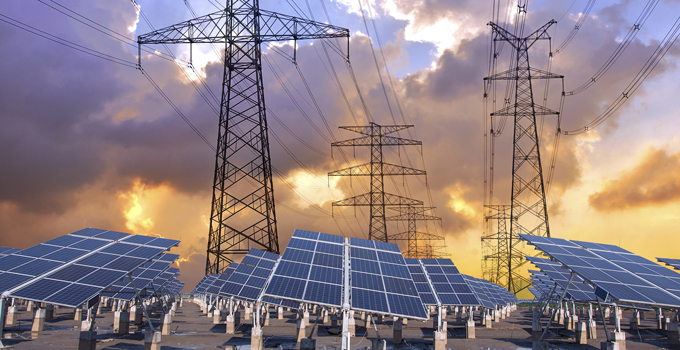
Grid connection is about the system you’re connecting to as much as it is about the gear you’re connecting. Understanding what lies beyond your plant boundary and the impact it can have on you and vice-versa can benefit the project as it comes to life, and make it a more valuable asset into the future.
Successful grid connection of solar plants is based on three rules. Each of these rules isn’t necessarily specific to solar PV, but we think that solar PV is uniquely placed to adhere to them and consequently optimise the connection.
Rule 1: Don’t stray too far
The low visual impact and ubiquitous resource that solar PV utilises means there’s no need to hide your solar farm away or build it in a high-sun area (although some sun will be good). Shorter lines between your site and the grid will save time and money. The time is saved through shorter, less-complicated approvals. The money is saved in design, construction and materials. Pretty obvious.
This is a paradigm shift from previous renewables development though. Wind developers, like their hydropower counterparts, have had to observe keenly the vagaries of climate, weather and geography to understand where viable sites might be. These sites have often proven remote from the existing transmission system and so new lines or new upgrades to the transmission system have been required at great project expense.
Solar has an advantage in this regard and developers should capitalise on that advantage. Spare capacity and land in the transmission and distribution networks can be used for solar farms without perhaps the need for the economies of scale that have driven the large wind farms and hydropower schemes of the past to stretch the megawatt capacity to support an expensive connection asset.
Rule 2: Don’t try to overdo it
Whether you build close to the grid or not, there’s no real advantage in over-burdening the grid with your generation. The shared network is planned around efficient delivery of power to the customers.
Currently, customers are pretty well catered for in terms of generation sources, and so the likelihood is quite low of the shared network being augmented to allow greater power evacuation from a solar site with no cost to the solar developer. This means that the grid constraints become a cap on the economic size of the solar farm. These constraints are not just driven by the thermal rating of the lines but may also relate to voltage control or power quality.
The reality is that the more power you try to plug into the grid, the more you’ll have to pay to do so. This is especially true if you push the limits. So don’t – or if you think you can, or think you have to, then follow rule 3.
Rule 3: Do your bit
The Australian National Electricity Rules provide for a graded connection standard to be assessed based on the capacity of the plant being connected and the capacity of the grid to connect that plant. The plant will be connected if it can meet automatic access standards or a negotiated level above the minimum standard. The standards are generally assessed against the grid of today.
We know, however, that reductions in the level of synchronous generation may leave the grid weaker than it is now. This weakening may impact the future capacity of the grid to support substandard generation connections. This will mean that these generating systems that are substandard may be constrained or disconnected during weak system conditions.
This is a threat and an opportunity for new solar projects. The threat is declining revenue as the grid weakens over time. The opportunity is to not only avoid the revenue decline but potentially increase production opportunities or scalability of your asset.
This opportunity can be realised through two main avenues:
- Matching the capabilities of the solar farm to the needs of the local network: For example, if the network has customers nearby, it’s likely that those customers or the network equipment supplying them will be sensitive to swings in voltage profile. A solar farm with good reactive capability and voltage controls could have higher capacity and/or a cheaper grid connection since the network operator won’t have to augment their plant.
- Providing transparency of performance capabilities: To gain advantage from these additional capabilities, they must be clearly defined and communicated. This is most often done through clear documentation and the provision of accurate dynamic models. Accurate dynamic models are already mandatory for plants over 30 MW in Australia. They may well be good business practice for smaller installations too, depending on the impact the plant can have on the network.
The solar industry and the wider electricity supply industry in Australia are on an accelerated learning curve when it comes to utility-scale solar due to the rapid deployment of this technology.
Grid connection does not need to be a roadblock to the roll-out of solar farms , but it must be carefully considered not just as a hurdle but as a tool to ensure the plant continues to be able to inject to the grid as the grid changes.
If you would like to find out more about how Entura can help you overcome grid connection challenges when developing your solar farm, please contact Donald Vaughan on +61 3 6245 4279 or Ranjith Perera on +61 3 6245 4272.
About the authors
Donald Vaughan is Entura’s Technical Director, Power. He has more than 25 years of experience providing advice on regulatory and technical requirements for generators, substations and transmission systems. Donald specialises in the performance of power systems. His experience with generating units, governors and excitation systems provides a helpful perspective on how the physical electrical network behaves and how it can support the transition to a high renewables environment.
Ranjith Perera is a Specialist Power Systems Engineer at Entura. He has over 22 years of experience in Australia and South-East Asia, working on customer and generation connections and broader power system analysis. Ranjith has provided power system advice on a wide range of network augmentations, network planning and system stability in Australia and internationally. These studies included option analysis in transmission planning, constraint analysis, determination of reactive support (dynamic or static) in system stability / TOV and detail load modelling in voltage stability. Ranjith also developed voltage recovery guidelines to TNSP based on regulatory requirement and customer equipment tolerances.
MORE THOUGHT LEADERSHIP ARTICLES
Maximising irrigation certainty and security with the right data
Perhaps the greatest gift to any agricultural region is increased certainty of reliable, available water.
Agricultural communities thrive when they can depend on irrigation. Confidence in a reliable supply of irrigation water is critical for increasing agricultural productivity, diversifying businesses, creating new opportunities for investment, and strengthening rural and regional communities.

To be successful, an irrigation scheme must deliver adequate and secure water to users when required. In an increasingly volatile climate, secure water supplies can only be guaranteed through careful management and through well-informed planning and decision-making.
But how can irrigation managers decrease the risks to their storages and supply systems, and increase the effectiveness of their plans and decisions?
The answer lies in the quality of the data and analysis on which their decision-making depends. Irrigation storages and systems are huge investments, and getting the best out of them should also involve some targeted investment in a state-of-the-art data management and decision-support system.
The key components of a water management system
Water managers considering implementing a water management system should look for the following key components and features:
- accurate measurement and data capture from well-maintained field sensors and telemetry
(including automated quality checking to detect major data errors or missing data) - historical data, or a representative dataset, that shows inflow patterns and generates stochastic inflow data
- an optimal hydrological model of the catchment and storage that models inflows and water levels and how the storage varies (models should be reviewed periodically with the most recent data to ensure that the parameters are still optimal and that forecasts are performing as expected)
- forecast rainfall data for the short term, directly incorporated into the system from the relevant meteorological forecasting agency
- user-friendly customisable dashboards or apps that allow rapid oversight and interpretation of the state of the system and short-term forecasts
- cloud-based storage of information in a robust database, providing a reliable, fully hosted and maintained service, continuously operated and improved by experts, without the need to invest in hardware or directly employ specialist technical expertise.
In combination, these features provide the foundations for a successful water management system, and a worthy investment in water security, providing resilience to climate variability and shifts.
An award-winning integrated water management system in operation
Tasmanian Irrigation engaged Entura to design, develop and deliver an integrated water management system for Meander Dam in northern Tasmania. This dam provides irrigation water to an agricultural area with further development potential, regulates seasonal environmental flows, and also generates hydropower to help offset operational costs.
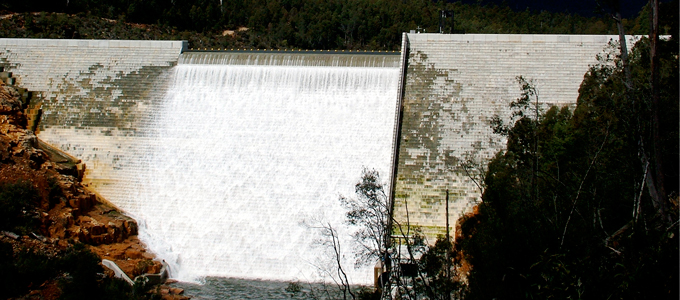
Entura’s water management system delivers a full picture of the dam’s current status and possible short- and long-term water storage and power output scenarios, providing reliable information to help deliver irrigation certainty while maximising hydropower generation and ensuring dam safety.
The system harnesses real-time rainfall and flow monitoring data captured by a network of catchment telemetry. This information is combined with a hydrological model of the catchment and weather forecasts from the Bureau of Meteorology to produce short-term (7 day) and long-term (up to a year) forecasts and simulations, showing a range of possible scenarios and probabilities for water storage and power output.
These forecasts and simulations offer the necessary insights to understand the immediate and longer term implications of management actions, and to make operational decisions based on different risk profiles.
The dam’s current status and possible future scenarios are presented via a user-friendly dashboard interface. The data can be delivered in whatever format or platform the client desires, and is able to integrate with other applications or have other features added to it.
Real-time information from water meters on pumps within the irrigation area is also brought into the system to give the operator a complete water balance in the area fed by the dam.

Because Entura’s solution is cloud based, it is robust, ensures continuous effective operation and maintenance, and allows very high reliability (99.995% uptime) to be achieved for reasonable cost.
Entura backs-up the system with 24/7 expert support to keep it performing at an optimal level. This is a cost-effective and secure way for an irrigator to access the expertise behind a specialist best-practice system, avoiding the need to purchase and maintain expensive hardware, reducing the requirement for any specialist technical capacity on staff, and eliminating the risk of system error or outage.
Benefits of the water management system
Certainty of water supply
In the region dependent on Meander Dam, Entura’s system contributes to Tasmanian Irrigation’s ability to deliver certainty of water supply, which is crucial for increasing agricultural output and productivity and maintaining resilience. Water security delivers greater confidence for investment in these individual farms and high-value crops, but also increases the confidence and development of the region as a whole, strengthening the community through increased employment and economic activity.
In the 2015–16 irrigation season the region experienced below-average rainfall that resulted in reduced inflows into Meander Dam and increased demand for water supply to irrigators. With the aid of the integrated water management system, Tasmanian Irrigation was able to match demand from predicted storage levels, fulfilling irrigator expectations and retaining sufficient storage capacity to be able to extend water delivery for an additional month. This ensured that irrigators were able to finish final crops and also maintain pasture growth for livestock and dairy activities.
Maximum hydropower generation
The water management system also allows optimisation of the dam operating rules to get the most out of the dam’s integrated hydropower facility, while still maintaining security of irrigation supply. The system enabled Tasmanian Irrigation to maximise hydropower generation after the end of the 2015–16 irrigation season, as the predicted rainfall allowed increased generation which also minimised the potential for the dam to spill.
Dam safety in severe weather
A further benefit of the system is improved decision-making regarding water resources and dam management during severe weather. This offers direct benefit to the health and safety of the local community, the local environment and the productivity of the local economy through reducing drought-related costs and impacts (e.g. loss of farm productivity, mental health impacts, maintenance of minimum environmental flows) and mitigating flood risks and impacts (e.g. maintaining dam safety, minimising spill, and managing downstream safety and environmental impacts).
The Meander Dam integrated water management system was the winner of the Australian Engineering Excellence Awards Tasmania 2016 in the category ‘Control Systems, Networks, Information Processing and Telecommunications’.
Entura has extensive experience supporting water managers to make the best use of their storages for multiple water uses (whether for hydropower, irrigation, environmental flows, or domestic or industrial purposes), and in creating innovative decision-support systems to manage water risks through reliable and accessible data.
To discuss how Entura can support you to increase the efficiency and security of your water storages through the right operational decisions, please contact Phillip Ellerton on +61 439 010 172.
MORE THOUGHT LEADERSHIP ARTICLES
Hydropower generates opportunities for businesses in India
In recent years, India has emerged as a world leader in renewable energy and this growth is presenting opportunities for businesses looking to diversify their activities.
A range of renewable energy developments such as wind and solar, from the smallest to the largest scale, are planned and getting underway all around India. There’s also still plenty of untapped potential for hydropower, particularly in the rugged north and north-west of the country.
Estimates suggest that less than a third of the country’s potential for hydropower has so far been exploited – and that presents an opportunity for organisations seeking to embrace renewable developments as part of their commitment to sustainable social and industrial development, quality of life, and a clean energy future for the nation.
The time is ripe for private investment in hydropower in India. Significant government incentives and subsidies are available to encourage increased hydropower development. Hydropower also offers added value to the power network in the form of immediately dispatchable power to balance any variability of solar and wind output.
Enthusiasm and opportunities are two important factors leading to hydropower success, but another critical factor is reliable expertise, and this may be less available to many potential proponents of hydropower projects if they are new to the hydropower sector.
Progressing through all the necessary steps of any power development process is difficult at the best of times, let alone for a developer who has little or no prior experience.
Hydropower, like all power developments, has its challenges: land acquisition, resettlement, rehabilitation, geology, technical challenges in dam and scheme design and construction, financing, and so on. These challenges can be considerable, but can also be overcome with the right expertise on hand.
Chanju-I hydropower project: a success story
When Indo Arya, a large conglomerate with interests in steel, thermal power and logistics, decided to make its first foray into hydropower, it recognised the need to engage an experienced hydropower consultant and it turned to Entura to provide the long-term support to ensure the hydropower project’s success, from the earliest feasibility study right through to operation.
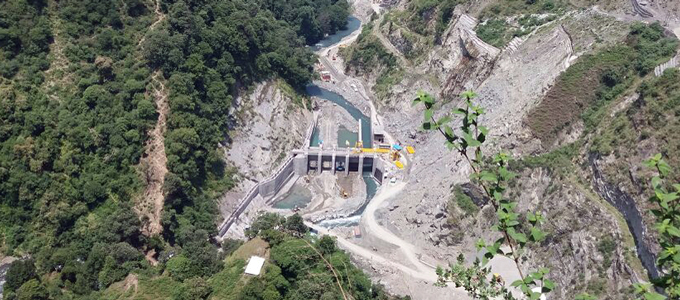
I A Energy, a special purpose vehicle, was formed for implementation of the Chanju-I run-of-river hydropower project in the Indian province of Himachal Pradesh. I A Energy provided all the financial and management capabilities, while Entura provided the technical expertise and project development knowledge.
Entura’s ongoing role in this project, supporting the client across all project stages as a trusted advisor, went beyond what might be described as ‘owner’s engineer’, achieving a considerable level of collaboration between developer and consultant that enabled the project’s success.
Now, nine years since the earliest site visits, the Chanju-I run-of-river hydropower project is set to deliver its 36 MW of renewable electricity, thanks to the power of the water flowing downstream from the confluence of the Bhararu and Chanju rivers. The project will generate attractive financial returns for its owner and the State Government, but will also directly benefit the local community, with power, tuition and health services.

Entura’s involvement over the full cycle of the project helped I A Energy ensure the right location, access and water availability for a viable project. We recommended the site, and then worked closely with the client to progress the project through its various stages, including site investigations, exploration of hydropower potential, environmental impact assessment, feasibility assessment, project approval, tender design, detailed design and construction advice and support.
Entura also assisted I A Energy to set up the organisation of the project and quality procedures on site, and our engineers regularly attended the site to provide ongoing advice and support during construction.
The project involved constructing a 16m-high barrage, a 5km-long headrace tunnel, two underground desilting chambers, pressure shafts, and a surface powerhouse. Entura provided technical expertise in optimising the design and construction, costing, contract packaging, selection of equipment, scheduling and project management. Our involvement delivered valuable outcomes such as increasing the asset capacity from 25 MW to 36 MW.
Overcoming project challenges
During the development phase, the Chanju-I project faced many issues and challenges with the potential to stop or significantly delay the project. These issues included approval delays, environmental issues, stakeholder management, and disagreements with upstream developers with respect to the location and height of the barrage, river basin development plans and infrastructural development.
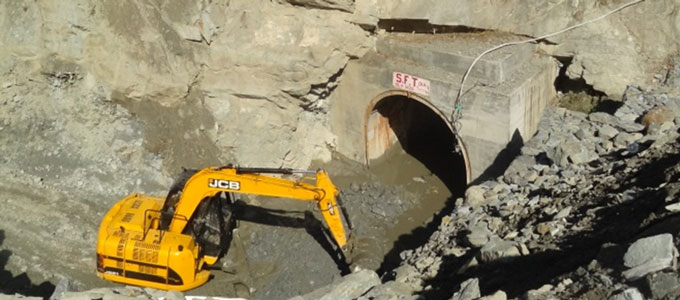
Entura’s continuous involvement, timely advice and support during critical situations helped the project team stay on top of these challenges, ensuring ultimate project success. In spite of the hurdles, the collaborative approach provided an efficient mechanism to address the issues and move the project forward at all times, even enabling early commencement of construction. By fast-tracking the construction of the project, the developer maximised its returns, and the project has been noted for its speed and efficiency in construction.
The way Entura serviced the project was praised by the project authority and strengthened our relationship with I A Energy. The longevity of Entura’s engagement with I A Energy on the Chanju-I project demonstrates the importance we place on delivering well for our clients, whether the project is small or large, and our ability to work as a valued and reliable partner of the client throughout the full project lifecycle.
To find out more about making the most of the opportunities available in the global renewable energy sector, please contact Shekhar Prince on +61 412 402 110.
MORE THOUGHT LEADERSHIP ARTICLES
How can we manage a network with more renewables?
Can our network and market frameworks support two to three times more renewables in Australia in the next 10 to 15 years without radical or innovative actions?

Once upon a time, we had an electricity system that was dominated by large users and large producers, and everyone else just tagged along. It needed very few points of control. Demand was easy to predict, as was the availability and cost of generation.
This is increasingly not the case.
The predictability and consistency on which the market and the network relied are being eroded by changes in how we produce and consume electricity. The efficiency benefits of the market are being undermined and it seems unable to find a ‘new normal’ that works. At the same time, the technical robustness of the electricity supply is being undermined through the reducing share of dispatch of synchronous generation.
These effects are only beginning to emerge in the wider National Electricity Market (NEM). We are suffering from increasing uncontrollability, unpredictability and variability.
Uncontrollability
As wind and solar PV replace synchronous generation in the NEM, system inertia and fault levels will steadily decline, along with the availability of frequency-control ancillary services (FCAS, or ‘spinning reserve’). More self-dispatched generation also limits the market operator’s ability to efficiently manage transmission constraints.
Unpredictability
We can use statistical models to predict demand pretty accurately unless we factor in customer storage. Installation of uncontrolled storage adds a degree of uncertainty to the demand. The current pre-dispatch followed by real-time dispatch methodology may not be capable of dealing effectively and efficiently with this uncertainty. Furthermore, the factors determining take-up of new technologies are difficult to predict. This uncertainty makes it more difficult for network planners to forecast and hence maintain capacity in the network.
Variability
Increasingly, generation dispatch patterns (and load patterns in some regions) depend on non-market variables like sun and wind (and rain). This variability can lead to a wide range of valid system dispatches, which in turn may require a wide variety of network supports, such as reactive power support from SVCs and the like. Interconnector capacity requirements vary depending on dispersion or concentration of generation relative to demand.
How might a low-synchronous-generation network be managed?
In many ways Tasmania provides a glimpse of the future in terms of how a low-synchronous-generation network may be managed. Since Tasmania has been connected to Victoria, generators, major customers and the network service provider, with support from Entura, have collaborated to extend and enhance the Tasmanian power system’s ability to cope with what is already in excess of 70% non-synchronous generation under high wind and high import on the interconnector. While the interconnector can provide some frequency support, this support is capped within the capacity of the link.
The solution in Tasmania is to reduce demand for frequency control, increase capacity to supply frequency control and actively manage fault level and inertia. This has required detailed understanding of the power system dynamics within the Tasmanian power grid as well as innovative engineering to understand and adapt hydro generators to extend their capability or flexibility. The solutions range from tweaking the control systems of individual generating units to establishing and coordinating system-wide protection schemes and constraint equations.
This experience shows that understanding the fundamental characteristics of a power system and its likely operating modes, and a common purpose and resolve to enhance its operation, can lead to an expanded technical envelope in which the electricity market can seek a cost-effective outcome. It has required collaboration across the sector including equipment manufacturers, owners of windfarms, hydropower stations, interconnectors and large customers.
Can this experience be replicated elsewhere?
Different power systems may demand a different set of solutions, but the fundamentals remain the same. A functioning AC power system needs inertia, fault level, frequency and voltage control as well as energy sources to function to an acceptable standard. Each power system will have its own sweet spot for providing these requirements. Inverter-based generators (solar, wind and batteries) can provide inertia-like responses for instance and so may reduce reliance on synchronous machines for that requirement.
A bigger question is: will the market takes us there or will it lead us down a blind alley of misguided self-interest? We are already seeing some murmurings of market reform that may ultimately lead us to the right long-term solution, but I’m not sure that we can always rely on market-led transitions, especially where the transition has not been envisaged as part of market design. This may be a misplaced leap of faith.
It’s clear that no single solution is going to sort this out in most cases. It’s also clear that some level of collaboration will be required to make the transition work smoothly. The planner must also consider technological change and customer expectations; else we run the risk of over-capitalising on solutions only for them to become redundant and ‘stranded’.
Ultimately, we know the challenges are not insurmountable but we also know that the solution is likely to be arrived at through care and deliberation rather than market meanderings.
If you would like to find out more about how Entura can help you adapt successfully to the rapidly changing market for electricity generation and energy services, contact Donald Vaughan on +61 3 6245 4279 or Wayne Tucker.
About the author
Donald Vaughan is Entura’s Technical Director, Power. He has more than 25 years of experience providing advice on regulatory and technical requirements for generators, substations and transmission systems. Donald specialises in the performance of power systems. His experience with generating units, governors and excitation systems provides a helpful perspective on how the physical electrical network behaves and how it can support the transition to a high renewables environment.
MORE THOUGHT LEADERSHIP ARTICLES
Overcoming potential roadblocks when developing a solar farm
If you are planning a utility-scale solar development, how can you avoid the potential pitfalls and maximise success?
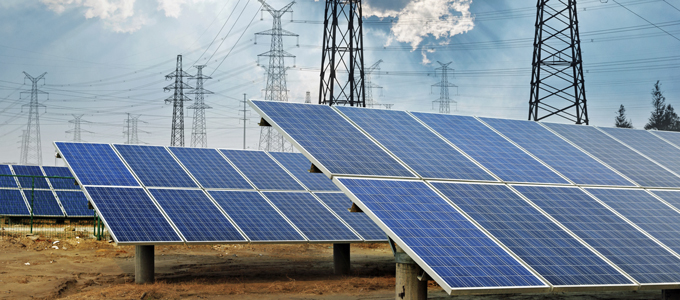
We’ve heard the equation so many times, and it seems so simple: take plenty of sun, add the rising costs of energy, factor in the rapidly falling costs of solar technologies, and throw in an increasing trend towards fossil fuel divestment and social and environmental credit for supporting renewable energies, and you’ve got a no-brainer: solar power is good business.
But while Australia ranks amongst the world leaders for the uptake of smaller scale solar, there is still enormous untapped potential in the utility-scale solar photovoltaic industry. The country has a very large area of high insolation, the solar resource is less variable than wind, solar farms don’t usually have the same level of impacts or objections as wind projects, and sources of funding appear to favour solar over other renewables.
So what could possibly go wrong? Well, there are a number of hidden risks that could have the potential to ‘make or break’ a project.
Potential roadblocks when developing a solar project
In each phase of a renewable energy project, there are some potential roadblocks and challenges that could cause costly delays or reduce your expected return. The more you can do as early as possible to identify, understand and resolve these challenges, the more likely your project is to succeed.
The stages of a utility-scale solar project (site identification, feasibility assessment, approvals, financial close, construction and operation), and the possible pitfalls in each stage, are reasonably similar to those encountered in all renewable developments regardless of technology.
Having worked on a wide range of renewable projects in Australia, we have learned some key lessons in how to successfully bring renewable energy projects to completion and operation, and how to avoid costly surprises, delays and other setbacks.
PLANNING APPROVAL
If you’ve already been involved in developing any renewable energy project, you’ll know that to maximise your chance of smooth and timely progress, one of the most important investments is early and effective stakeholder engagement. This includes identifying the main issues affecting the social acceptance of your project, such as the history of past projects, council objectives, permit requirements and the requirements of the local power utility.
No doubt, you’ll have experience in developing a comprehensive community engagement plan, with open, honest and extensive consultation. You’ll already have navigated the environmental constraints at project sites, including fauna, flora, Aboriginal heritage, historical heritage, access, stormwater and erosion management, among others. So, in terms of the planning process, is there ‘nothing new under the sun’ when it comes to solar?
Utility solar projects may look reasonably easy, and to some extent this is true. However, most of the same planning processes and timelines will apply as for other developments (including the same long turn-around times if you need to revise anything during the process, or expand the scale of the project). Therefore, as you would for any project, be sure to fully explore and understand the development controls that apply to the site, through the local planning scheme or environmental plan, the various permits and consents that are required to authorise the use and development, and the level of assessment that will be required for permits. And ensure that the specialist studies undertaken are as high quality and comprehensive as you would for any other development.
As well, keep particularly alert for project-specific pitfalls such as airport reflections, very high ground coverage and penetration, working in flood zones, and so on.
Learn more about planning for solar success.
GRID CONNECTION
Proximity to the grid is one of the most important criteria for selecting a site (along with the available solar resource, suitable topography and land zoning). We strongly recommend engaging early with the power utility to ensure capacity and access is available, so that you can export your generation without curtailment. There is also now an extensive range of published information on distribution networks, including zone substation connection capacity, which can provide valuable insights into the best place to connect.
Although your dynamic modelling and connection studies will include the obvious assessments (such as reactive power capability and fault levels), your project will also benefit from thorough investigation of generating system response to frequency or voltage disturbances, impacts on the network capability, and remote monitoring.
Consideration of network support is another important element of discussions with the power utility and opportunities should be investigated at an early stage as they can shape the details of plant design. In the long term, these supports may form the basis for additional revenue streams or competitive advantage where network stability constraints arise.
Learn more about the art of solar grid connection.
DESIGN
In relation to the design of your solar project, how confident are you that you are using the most appropriate technology, such as modules or tracking systems (where practical and economically viable)? As you select your equipment, be sure that it is certified to the relevant Australian standard, and that all parts are compliant. You should also check that you have included sufficient isolation points, and whether fuse, switchgear or circuit breakers are the most appropriate.
When you are selecting and dimensioning your inverter, consider how it will react if instantaneous condition exceeds the maximum power rating. Does the attempt to change voltage to manage the condition lead to shut down? How can you prevent this, and how did you derive your optimum inverter concept, your string and DC/AC ratio?
In your overall design, consider the implications of a failure in the system. By adopting an AC electrical ring topology, for example, you could ensure the minimum loss of generation. You should also investigate how you will monitor failures and identify faulty modules within an array of thousands, and how to minimise near and far shading on parts of the arrays.
Another important aspect is to implement a ‘Safety in Design’ methodology and check that construction workers and your ongoing personnel have the appropriate training to operate DC and AC equipment and to conduct procedures both effectively and safely.
While almost all aspects of solar plant design appear simple and generally low risk, we know that careful consideration of plant lifecycle can lead to more efficient construction, operation and refurbishment. Good design can reduce failures, lost production and maintenance requirements. This is true of any project, solar is no exception.
Here are the six essentials for solar farm design.
FINANCING
Unlocking secure and adequate project finance is about much more than calculations of financial return on investment. It’s also about offering the investor confidence that your project has adequately considered and planned for all potential risks across the spectrum of financial, technical, stakeholder, community and environmental issues.
To bring your project to financial close you need an offtake agreement of sufficient length, a grid connection agreement, land agreements for the site and transmission route, developmental approval, a bankable yield estimate and a selected delivery model.
Financiers are more likely to provide better terms if there is less uncertainty for the revenue stream over the debt financing period, so the longer the warranty period on the delivery contract the better. Consider how you will monitor defects, and investigate third-party warranty insurance for the lifetime of the project.
Another key factor in offering confidence to investors is the reliability of the site’s solar resource assessment and the project’s energy yield. We recommend that a variety of reliable and appropriate solar resource datasets, with at least 10 years of data, be considered, as well as short-term on-site ground-based measurements. Financiers will also expect that you factor in the possible year-to-year variation and the uncertainties of resource measurement and energy estimation, in addition to loss assumptions and degradation.
A thorough due diligence investigation on your modules will mitigate risk and offer your investors further certainty and confidence. When assessing the modules, make sure you look at the technical test data and its implications for failure rates and degradation, but also explore the track record and capacity of the manufacturer, particularly considering the risk of manufacturer insolvency.
Take a closer look at some key risks often scrutinised by lenders and investors.
If you need support with any aspect of your solar project, or would like to discuss how Entura can help you maximise your project’s success, contact Silke Schwartz on +61 407 886 872 or Patrick Pease.
About the author
Silke Schwartz has over 15 years’ experience in the renewable energy industry in Australia and around the world. She has been involved in the technical due diligence of renewable energy projects in Australia, India and China, including condition assessments, technical assessments and performance reviews.
MORE THOUGHT LEADERSHIP ARTICLES
Getting hydropower right: The six key considerations for a successful project
So, you want to develop a hydropower project? Any hydropower development is a major undertaking, so you need to be sure you get it right.
In our increasingly electricity-dependent world, hydropower offers a cost-effective and environmentally sustainable, clean-energy solution with significant development opportunities in Asia and Africa particularly.
Solving the technical challenges to establish a reliable hydropower scheme may seem complex, but engineering issues are only one part of the equation and may even be relatively straightforward compared with some of the broader issues and risks affecting a project’s success or failure.
Hydropower developments are more likely to gain social and regulatory approval, adequate and secure finance, and be successful in the short and longer term, if you pay early and detailed attention to the following six key considerations.
1 – What is the resource and how might it change?
Properly investigating the long-term history and variability of an area’s water resource is essential to the success of any hydropower project. However, even in areas in which water availability may have been reasonably consistent in the past, climate change introduces a new level of uncertainty for future projections.
To maximise the success of a new hydropower development for the short term as well as long into the future, it is essential to build climate resilience into projects. This requires specialist hydrological modelling based on the best historical data combined with expert future projections, taking into account the range of potential impacts on climate, rainfall, inflows and water availability.
Climate effects may not always mean reduced water availability. In some cases, the hydropower scheme may need to be able to accommodate and optimise the use of increased rainfall or inflow.
However uncertain the future resource, thorough investigation of what is currently known and what can reasonably be projected gives you the best chance of a successful, climate-proof scheme that can withstand future inflow variability and other longer term changes in the catchment.
2 – How stable is the proposed location?
One of the greatest potential complications and causes of delay in a hydropower development project is an unwelcome geological surprise.
Thorough, specialised investigation of the proposed site’s topology, geology and seismic risk is crucial, and can greatly impact cost, financing and viability. The more stringent and detailed the preliminary geological and geotechnical investigations, the more likely you are to avoid problems through the construction period and deterioration of the infrastructure over time.
This is particularly important where a large dam is proposed, as the extra weight of the water, concrete and sedimentation creates massive forces on the dam’s foundation, which may cover a large area and a potentially geologically diverse set of subsurface conditions. The choice of the appropriate dam type and construction method must be influenced by the unique conditions of the dam site, and stability of the site is a key consideration.
3 – How much power do you need now and will that change?
Populations and their demands for power don’t stay static for long. It’s important to think about the broader demographic of the region in which your scheme is to be developed. Is the population growing rapidly due to an ongoing rising birthrate, or could it shift significantly due to changes in neighbouring regions creating population movement?
Furthermore, industrial demand needs to be carefully projected, especially in a growing economy. What is the future development potential of local towns or cities? Is there potential for any major new industry in the region that may rapidly increase the power demand? On the other hand, are there any foreseeable threats to existing major industries that may suddenly lower demand?
As technology and lifestyle expectations change, especially in developing nations, residential demand may also rise rapidly. This demand can also be significantly, although usually predictably, variable, such as where climate extremes create peak demand coinciding with heating or air-conditioning requirements.
Another important factor, particularly in Asia and parts of Africa, is the potential for power generated in one country to be sold to neighbouring countries.
4 – Can you get the power to where it is needed?
A power source is only useful when it can reach a potential user. So another key consideration for a successful hydropower development is the ability to deliver the power to where it is needed through existing, upgraded or new transmission and distribution infrastructure.
Commonly, the best economic outcome of a power development is when much of the load can be used near to where it is generated, as this lowers the costs of transmission development, and lessens the loss of power when it is transferred over distance. Those few percentage points of power loss over distance could make the difference in the overall financial return on investment.
Careful planning of the routes for transmission and distribution lines is critical to success, with sizeable implications for project costs if lines must cross remote or rugged terrain, or socially or environmentally sensitive areas.
5 – What social and environmental impacts are possible?
From the earliest thoughts and discussions about a new hydropower development, it is critical to consider the project’s stakeholders, community and environment. As well as providing benefits to a project’s owner, electrification can deliver significant benefits to affected communities, raising living standards, alleviating poverty, helping to develop and diversify economic activities, as well as potentially improving water availability and management. However, hydropower should never be developed to the detriment of affected communities or the environment.
A ‘social licence to operate’ is fundamental to long-term success of your hydropower project. This can only be achieved where due consideration is given to social and environmental impacts throughout the project lifecycle, including those around changes in land use and ownership, and adequate consultation and engagement is undertaken with affected communities so that they receive a net benefit from the project.
Stakeholder engagement is the key to determining appropriate avoidance, mitigation, offsetting or compensation of any potential impacts – both immediate impacts, and impacts that may only emerge in the longer term. The most successful consultation is the ‘bottom-up’ and transparent approach, where affected communities are engaged and involved in the project right from its inception.
Safety is also a critical issue to be managed throughout a project’s life, including the safety of construction workers, ongoing employees, and the broader community. Identifying key safety risks early and managing them appropriately throughout design, construction and ongoing operation is critical to protecting a developer or owner against the major social and environmental consequences of a safety incident, as well as the long-term damage to that business’s reputation and financial viability.
6 – Can you obtain finance?
No hydropower project will succeed without available, secure project financing. Although hydropower developments offer opportunity to developers and financiers, lenders around the world are increasingly cautious and will require evidence of best-practice and sustainability to release project funds. They will need a range of risks to have been adequately investigated and mitigated, including all those considered above, as well as local political and regulatory issues.
A useful tool to evaluate the sustainability and strengths of a hydropower project and identify any further opportunities for risk mitigation is the Hydropower Sustainability Assessment Protocol.
Using a framework such as this offers investors greater confidence that their investment is safe, and that structured and systematic efforts have been undertaken to foresee risks across the spectrum of financial, technical, stakeholder, community and environmental issues.
Although not all risks can be avoided, this is the closest we can reasonably get to being confident that the project will not encounter any significant delays or problems through its lifecycle and will deliver the social, environmental and economic benefits it promises.
To discuss how Entura can help you plan and deliver a successful hydropower project, please contact Shekhar Prince on +61 412 402 110.
MORE THOUGHT LEADERSHIP ARTICLES
Keeping construction workers safe around high-voltage assets
Safety risks around high-voltage electrical assets are far from trivial, particularly those risks associated with earthing hazards during construction activities.
Keeping workers and contractors safe should be one of the highest business priorities. Safe systems of work and a strong safety record also ultimately benefit a business’s reputation, sustainability and long-term profitability. But achieving safety around high-voltage electrical assets means knowing your risks and how to control them, and one of these is the risk of an earthing-related hazard.
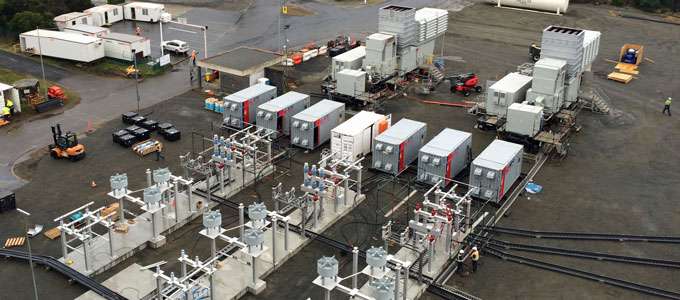
What is an earthing hazard, and how is it managed?
During a high-voltage electrical earth fault, such as a cable or equipment failure, electrical current passes from the faulted cable or equipment into the earth’s surface. One main function of an earthing system is to ensure the electrical protection system operates correctly (i.e. automatically turns the power off in a safe and controlled manner). As current passes into the ground, a localised voltage rise can be produced on the ground surface. Depending on a number of factors, this voltage rise can be harmful in the context of high-voltage installations.
As with any engineering design, the design and performance of an earth system is based on a set number of inputs. Some inputs are fixed; others are variable and may change over time. It is important for all owners of high-voltage assets to be aware of the variable components that their high-voltage earth system is designed to consider, and to ensure the safety of the system by taking corrective actions as deemed appropriate by standards and guidelines.
One such variable to consider is the safety of personnel and the public during construction activities, both within the site boundary and outside its footprint. According to Earthing Guideline 0 as referenced from Australian Standard AS 2067 (Draft 2014), the risk profile presented by the site will be affected by the increased presence of construction staff. This increased risk needs to be considered and addressed, and should result in site direction to construction staff.
Common earthing-related hazards
In general, leading contractors and asset owners pay a lot of attention to how earthing-related hazards and safety criteria may change when working in and around high-voltage assets. However, a range of common mistakes can be made during construction activities, which can introduce earthing-related hazards.
Typical mistakes include (but are not limited to):
- incorrect placement of temporary metallic security fencing or road barriers
- unnecessary removal or thinning of crushed rock layers
- exposure or breakage of subsurface earth systems
- incorrect placement of site sheds
- incorrect specification and arrangement of low-voltage electrical supplies for site sheds
- incorrect placement of equipment and infrastructure laydown areas
- incorrect planning of the work activities and procedures related to craning or elevated work platforms
- lack of site awareness regarding concealed and visible electrostatic and electromagnetic induction hazards.
What do you need to know?
High-voltage asset owners and construction contractors should ask these questions to ensure the safety of their construction personnel:
- Do I know where the high-voltage earth system is located?
- Does the work I am doing involve working inside or in close proximity to a high-voltage earth system?
- How far outside the earth system boundary do I need to consider the influence of the earth system? Is my work within this zone?
- Has this site’s earth system performance been assessed, and how recent was the last earth system audit? Based on the previous audit results, are the expected earthing-related hazard zones around the site clearly marked and controlled?
Although these questions may seem simple, without a high-voltage earthing layout drawing, a previous earthing audit report or intimate knowledge of the design criteria used to design the high-voltage earth system, you may not be able to answer the questions above with any certainty.
What are the right solutions to control defined hazards?
Solutions to possible causes of earthing-related construction hazards can vary from basic to complex. The most important thing is for the hazards to be properly assessed and managed in accordance with the risk management hierarchy of controls and the applicable national or international standards and guidelines.
In some cases, the traditional approach of earthing all metallic infrastructure may introduce hazardous voltages into the work zone rather than eliminating them.
How to build earthing safety into project planning
To ensure earthing safety during construction is not overlooked, asset owners should integrate a construction earthing assessment as a line item in their initial project schedules (during construction planning) and asset management plans. They should also provide constructors with an overview of typical construction activities that may present earthing hazards.
Because construction sites can change in layout, size and arrangement over time, it is important that a reassessment of possible introduced earthing-related hazards is also integrated into the construction plan, to ensure that earthing safety is maintained throughout the construction process.
The best results are achieved when the asset owner, the constructor and earthing specialists work together to develop appropriate project solutions to provide a safe working environment.
To discuss how Entura can help you assess your earthing safety risks, please contact Patrick Pease.
MORE THOUGHT LEADERSHIP ARTICLES
How can businesses get more value from their investment in solar and storage?
What do you need to know to minimise your risk and maximise the value of your commercial-scale solar and storage system?
In our fast-moving environment, the time for businesses to act on solar and storage is now. Early movers are well placed to capture the best opportunities from commercial solar generation (large solar arrays in places such as shopping malls, warehouses, universities or airports) and other types of mid-scale embedded generation – and, notably, network operators are already moving ahead with some of their own innovations and installations to add value to the electricity network.
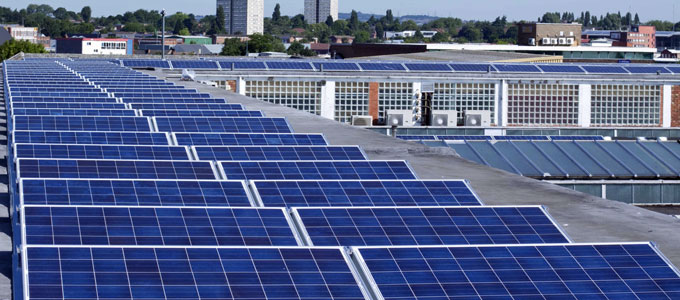
The business case for investments in commercial solar and storage are made almost entirely on the basis of projected savings on electricity bills assuming continuation of current tariffs. However, current tariff structures don’t reflect the way network operators experience costs to supply electricity, and the threat of future adjustments can make these sizeable investments risky for astute businesses. So how can you make the best of the available opportunities and add value to your investment?
As you prepare to act, you need to understand some key factors:
- how and where you can add value
- how to benefit financially from embedded generation and storage by working with network service providers (i.e. what schemes are available)
- how to manage the technical and commercial risks, and
- how to make the most of falling technology prices (particularly for batteries).
Behind the meter, or grid support?
Most existing embedded generation is rooftop solar PV installed ‘behind the meter’, reducing the business’s electricity bills, generating the business’s energy needs, and improving the business’s overall carbon footprint. The size of these systems has usually closely matched the load, and export to the grid has been less of a priority.
However, as storage technologies become cheaper and more readily available, greater scope emerges for renewable embedded generation to export power into the grid: providing extra generation in capacity-constrained areas, supporting peak demand, and reducing or deferring the need for grid upgrades or extension at the fringes of the grid or in new developments. They can also support reliability and power quality standards.
In this market, businesses considering solar and storage need to think of themselves as project developers. One way for developers to capitalise on the available prospects, minimise risk, and add value to a commercial embedded generation investment is to work out how to turn these possible forms of network support into additional revenue streams.
Benefits of network support
When embedded generation and storage adds value to the network, significant benefits are available for both commercial generators and network operators, and these benefits can be shared. Yet, despite these opportunities, there are still very few examples of mid-scale systems being recognised to provide network support.
Network support is typically where a system that is not part of the traditional network, such as solar, wind, or batteries, helps the network to deliver its function of reliable electricity supply to customers. As a simple example, a network operator facing rising demand in a specific area would traditionally plan for a substation upgrade. But if it costs less, they may consider a network support strategy to install local embedded generation and storage.
Whilst regulatory reform is underway to formalise parts of this, plenty of potential opportunities exist now. To make the most of these options, proponents need a good understanding of the key issues, and close collaboration with network service providers.
New developments, new possibilities
Opportunities for network support at existing premises can be very valuable, but these only exist in specific locations. Such prospects are certainly worth exploring; however, it is in the context of new developments that opportunities are becoming most abundant.
Where a new connection is required for a residential development, a large shopping complex or a similar large development, an opening exists to optimise the combination of baseload power supply from the network with peaking power from embedded generation such as commercial solar and/or storage. This option is particularly effective where the local resource coincides with the load, such as a good daytime solar resource that matches a daytime shopping centre load.
The embedded generation or storage may be able to significantly reduce the capacity requirements for the network connection, and alleviate broader network constraints that would need to be addressed if the entire additional load were drawn from the network. In all cases, battery storage increases the available possibilities by addressing instances where peak demand exists but generation output is not available, or where renewable energy generation does not coincide well with load.
Preparing for action
A good place to start exploring the possibilities for commercial solar and storage in more detail is Australia’s Clean Energy Council report Grid Support: Revealing Mid-scale Generation and Storage Potential. The Clean Energy Council engaged Entura to conduct this extensive study because we understand the regulatory constraints, the technology and its applications, and the multiple revenue streams that make up the business case for its proponents.
The report is based on detailed analysis of the commercial, technical and regulatory aspects of commercial solar and storage, and identifies the key areas that still need to be addressed so that network operators and commercial solar developers can fully harness the potential benefits these technologies can offer the grid.
To discuss how Entura can support you to best take advantage of the benefits of mid-scale embedded generation and storage, contact Chris Blanksby on +61 408 536 625, Patrick Pease or Silke Schwartz on +61 407 886 872.
About the author
Dr Chris Blanksby is a Senior Renewable Energy Engineer at Entura, and Entura’s lead solar energy specialist. In addition to leading the above-mentioned report for the Clean Energy Council, Chris previously led the work on demand-side-management opportunities for the Clean Energy Council. Chris has undertaken and published research on the solar resource in Australia, and has led several due diligence and owner’s engineer projects for wind, solar and microgrid projects in Australia, the Pacific and Asia. Chris is currently leading Entura’s owner’s engineer team assisting the Government of Cook Islands to implement six solar PV microgrid projects, and build capacity towards their 100% renewable target.
MORE THOUGHT LEADERSHIP ARTICLES
Are you investing in your most valuable asset?
There is banter doing the rounds on social media: One person asks, ‘What if we develop our people and they leave?’ The retort that quickly follows is, ‘What if we don’t develop our people and they stay?’
If we ask senior managers at power and water utilities about the critical factors in managing their assets, they might refer to balancing business risk with financial constraints while maintaining mandatory statutory compliance. They might list things such as asset management strategy, plant capability, plant reliability, plant performance, spares inventory, adequate OPEX budget, real-time data and effective software platforms.
Prompted further, leading utilities are making the link between delivering key functions and developing their people. Utilities are starting to see the need to invest in the development of their people as well as their systems and processes to help ensure implementation of sound business strategy. They may go as far as including people resources on their asset management breakdown structure.
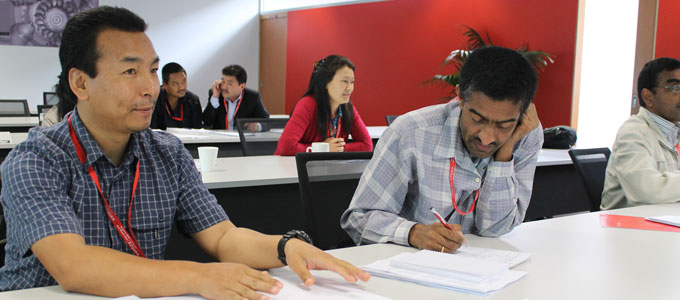
Power and water utilities the world over, whether public or private, are entrusted with managing important infrastructure providing a range of essential services to their customers. The effective operation of these utilities is a concern for governments, shareholders and communities alike, and utilities are increasingly focusing on being customer-centric, commercially focused, and operationally efficient.
Many openly specify a vision or mission that requires the business to embark on a ‘change journey’, using words such as responsiveness, innovation, reliability, modernisation, optimisation, safety, communication, sustainability, operational excellence, commercialisation and continuous improvement.
There is a commonality in many of these words, and that is people. It takes people to be responsive and commercially focused, to behave safely and to communicate. It also takes people to understand current performance and identify innovations.
Effective and efficient delivery and operation rely on people having the right skills and the competency to bring about change. The change may include new technologies and systems that people will need to learn to apply. So, cultural change is at the heart of any such journey, taking into consideration the desired future state, the behaviours (as well as the skills required to get there), and effective engagement and empowerment of employees along the way.
Over the years, I have worked with various power and water utilities, as well as developers and financiers, to lift capability across technical and managerial levels. I notice that, while people and their capability is on the minds of senior managers, there can be a disconnect with strategic direction, with no real integration with operational performance or workforce planning, and often a skewed view on what lift in capability is really required.
Change is coming
Around the world, a more integrated approach to utility operations is emerging. Globally, organisations are working toward change through integrated ‘asset management’ approaches that combine consideration of physical, people and process assets.
For many utilities, the natural assets are also important as an input that must be managed sustainably (e.g. water resource) or managed to meet regulatory and customer expectations.
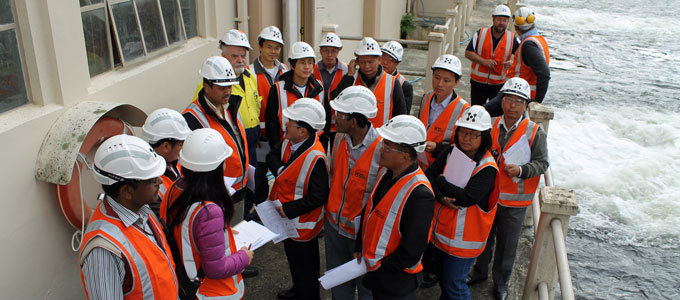
Other frameworks help organisations to link human, financial, social and manufactured capital when implementing strategy. Whatever the framework, the integration of all ‘assets’ or ‘capital’ is important in achieving the somewhat elusive ‘operational excellence’.
We know that fundamental to the success of a transformation journey is a sustainable workforce aligned to achieving the vision, mission and strategy of the business through the development of appropriate knowledge, skills and behaviours that focus on the business’s longer term goals. Thus, a whole-of-business approach to learning and development can play a critical role in successful implementation of strategy. Integration is needed across the various typical functional areas: strategy, finance, operations, human resource management and so on.
Success requires integration and alignment
Clients often ask the Entura clean energy and water institute to assist them with particular training in one of our key technical topics. Through further conversation, I often find there are other aspects in the holistic picture that need to be painted first. Are the procedures in place around which to train? Will this capability be important in the future? Will the learning and development activity address key risks? Who else in the business needs to understand these issues? Does it align with the strategic direction?
Integrating learning and development into business planning and operations is one way to ensure that capability development programs are designed in the context of strategy and initiatives, workforce planning, operational plans, HR systems, functional structures and mechanisms, and risk management activities.
Through facilitated workshops, senior management teams can set the broad direction for learning and development. This direction can then feed into more detailed capability assessments and training needs analyses. Through such an approach, investment in training is effectively apportioned in the right direction with the greatest chance of ultimately improving organisational success.
Taking the time and effort to prioritise capability development and ensuring it is aligned with strategic direction will bring ultimate rewards for utilities and bring a real return on investment. Not only will investment in capability development be better directed, it will assist with the wider challenge of engaging employees in the change journey itself.
If people grow fatigued with change, learning can rejuvenate and inspire. As Leonardo da Vinci once said, ‘Learning is the only thing the mind never exhausts, never fears and never regrets’.
If you would like to discuss how to integrate learning and development objectives with business strategy or to design a training program to suit your organisation, contact Dr Amanda Ashworth on +61 417 503 692.
About the author
Dr Amanda Ashworth is the Business Manager for the Entura clean energy and water institute. She is responsible for strategic development and operations including partnerships, client engagement, course development and oversight. Amanda also provides strategic advice on learning and development frameworks and contributes to leadership and management training for clients. Combined with her passion and commitment for capability development and training, Amanda’s research background and more than 20 years’ experience in environment, clean energy and water consulting and strategic planning, enables her to support clients to understand their capability and identify the right program of activity to meet their needs and bring organisational success.
MORE THOUGHT LEADERSHIP ARTICLES
Finding the right value in dynamic modelling of renewables
What value can you derive for renewable energy projects through developing accurate models? When is the effort and expense involved justified by potential benefits?
Renewable energy project developers are often confronted with seemingly large costs to develop accurate dynamic models of their projects. This can be due to regulation, or it may be because that level of accuracy, potentially in excess of the regulatory requirements, adds value to the project. It may be that the modelling actually allows the project to remain viable in the face of connection issues.
On some levels it’s easy to say the regulations require accurate modelling. However, for any renewable energy project there is a level of modelling that will be the right fit , and the regulations shouldn’t ask for more than that without good reason. So let’s look at the relative value of accurate modelling in various contexts, and then later we can see if there’s a mismatch between that value and regulatory regimes.
The requirements for power system modelling of generating units vary from place to place, but as ‘traditional’ generation levels recede and power electronics and intermittency gain more than a foothold in the power system, accurate modelling will increase in importance and value.
The aims of these models cover three levels:
- Level 1: Does my plant work?
- Level 2: Does my plant interact appropriately with the nearby network?
- Level 3: Does my plant interact appropriately with the power system as a whole?
Accurate modelling can add value at any of these levels, but the degree of effort required to release that value depends on the type of project, the type of network and the location in the network.
The issue impacts all renewable energy projects but let’s take a wind farm as an example and move it around the network to explore this.
Small wind farm in the distribution network
Let’s build a 10 MW wind farm and connect it close to a distribution substation on a 33 kV feeder. At this size, most of the ‘does my plant work?’ question is answered by the off-the-shelf inverter controls, so little value is to be gained at that level.
However, the interaction of the plant with the network and nearby customers is critical. The connection point is close to other customers and so the variability of the wind farm can impact the quality of the neighbours’ supply.
Accurate modelling here gives certainty that there’ll be no surprises at commissioning. Imagine convincing a network service provider that your flicker indices are OK, only to have the neighbouring plant force you to redesign or curtail your operations after commissioning. That has real project impact and possibly brand impact too.
Larger wind farm in the sub-transmission network
What if we move our wind farm to the remote end of a 132 kV line and build it ten times bigger? Now we don’t have any neighbours, although we could have some in the future. We have a stability problem because of the long line, so we now need auxiliary plant (e.g. a capacitor bank) to help control voltage and hence maintain production.
We’ve got a plant that has to cater for an external requirement (level 2) but that then implies an internal control or coordination requirement (level 1).
In this scenario, our models’ accuracy helps with internal design and, as a results, saves commissioning time. It also helps optimise production by clearly communicating the control actions of our plant to the wider system model. This allows the degree of stability improvement to be accurately characterised and so constraints are not arbitrarily applied. The business-case levels of production are preserved.
Large wind farm in the transmission network
If we move this large plant to a 500 kV connection point and triple its size, it’s almost akin to the scale of our 10 MW plant back on the 33 kV. Now we’re less interested in voltage controls due to the high fault levels at the connection point. It’s very difficult to see the influence of the wind farm’s controls on the surrounding network. The only possible value now is related to system strength and fault-ride-through phenomena (level 3).
This now requires accurate modelling of a smaller subset of controls, but it’s interacting with the whole system. In a strong system these issues are generally negligible. In a weak network, they’re critical. So, for this example, the value is derived from integrated design of the controls to ensure system compatibility (i.e. no constraints). The value stems from efficiency and effectiveness at levels 1 and 3. The value is in gaining connection, preserving energy production and streamlining commissioning.
The following tables summarises these three examples. It shows my opinion on the value of dynamic model accuracy to projects connected at various levels of the electricity grid. Note there is never a complete lack of value in having accurate models . Also note that this is relative value.
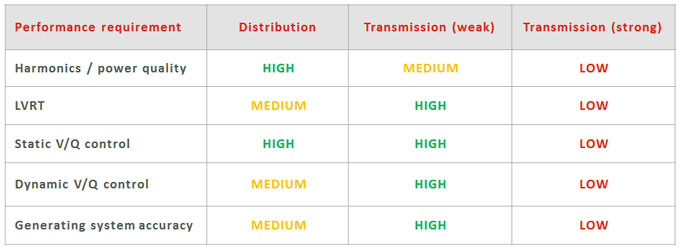
The cost of accurate modelling may not vary much across these three connection levels but the value it brings to a project does. The table shows an estimation of the value that model accuracy brings relative to the connection point strength and what aspects of the project it helps support.
So if you’re considering a wind farm, or any generation project, don’t forget the value that accurate modelling may bring to that project, but be mindful that this value may be limited due to the nature of the system and locale that you’re connecting into.
The art is to find the ‘Goldilocks Zone’ between the regulatory requirements for model accuracy, production loss through avoidable constraints and modelling effort. Too much or too little attention to these issues leads to unrealised project value. If we find the right balance, it’ll be just right.
If you would like to find out more about how Entura can help you adapt successfully to the rapidly changing market for electricity generation and energy services, contact Donald Vaughan on +61 3 6245 4279 or Silke Schwartz on +61 407 886 872.
This author originally presented on this topic at the Clean Energy Council Wind Industry Forum in March 2016.
About the author
Donald Vaughan is Entura’s Technical Director, Power. He has more than 25 years of experience providing advice on regulatory and technical requirements for generators, substations and transmission systems. Donald specialises in the performance of power systems. His experience with generating units, governors and excitation systems provides a helpful perspective on how the physical electrical network behaves and how it can support the transition to a high renewables environment.
MORE THOUGHT LEADERSHIP ARTICLES
Can commercial solar and storage reduce risk in an evolving electricity grid?
How can distribution network service providers best take advantage of the emerging opportunities presented by commercial solar and storage systems to reduce risk in an evolving electricity grid?
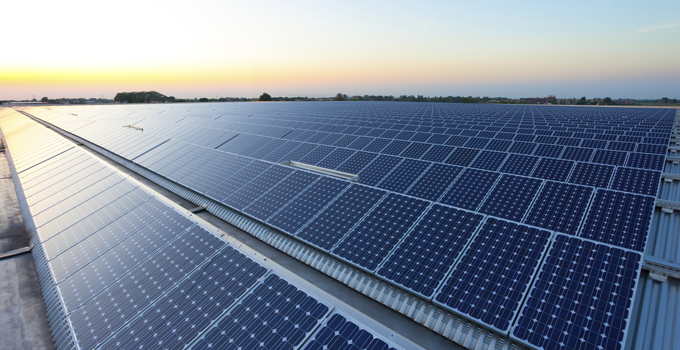
Commercial solar generation (large solar arrays in places such as factories, universities, airports, etc) and other types of mid-scale embedded generation and storage are already adding value to the electricity network, despite emerging in a relatively ad-hoc way in the grid.
For distribution network service providers (DNSPs), forms of embedded renewable generation and storage have typically caused some disruption of standard business models.
However, by better understanding the drivers for commercial solar and storage, and their opportunities for network benefits, DNSPs can take some level of control, reduce risk and build network value.
Opportunities for commercial solar in existing networks
Commercial solar and storage are primarily driven by non-cost-reflective retail tariffs. This means that, despite offering some benefits, commercial solar and storage are unlikely to be delivering their full potential benefits, such as reducing the costs of grid development, reducing peak demand, and increasing grid reliability, ultimately lowering power bills for consumers. In the process, they can also create additional workload for DNSPs, often requiring grid augmentations, development of new materials and procedures, and processing connection applications.
Rather than seeing this as a headache at the fringe of their core business, DNSPs need to be more active in using and incentivising these technologies in places where they add value, such as where they can reduce the costs of building and operating the network. DNSPs need to embrace the fact that these technologies will become a dominant factor in their business over the next 10 to 15 years (if not sooner) and plan accordingly.
This means that DNSPs will need to gain experience and understanding in:
- the technical capabilities of the new technology, including the rapid advances in their ability to provide grid support
- the statistical nature of renewable generation, and why it has already contributed to reducing peak load (and how this relates to type of generation, geographical location, and rates of uptake)
- the business model for proponents, how sensitive this is, and how it can be strongly influenced by subtle incentives to install in areas that are of benefit to the DNSP
- operation of new technologies, in particular battery storage, to understand their control capabilities and limitations, and the economics of their operation
- how best to measure reliability in renewable generation systems and storage, and
- the possibilities offered by forecasting.
Recent Australian Energy Market Commission rule changes provide a new framework under the Australian Energy Regulator to support these kinds of development activities. Under this framework, the Demand Management Incentive Scheme (DMIS) and Demand Management Innovation Allowance (DMIA) will provide significant support for DNSPs to undertake activities that are likely to benefit both electricity customers and DNSPs in the long run, by supporting exploration of new types of non-network solutions.
However, the points listed above are really just the beginning, and DNSPs need to be looking further ahead to new models of supply. At the moment, the price point of renewables and storage mean that many straight-out non-network solutions aren’t financially viable, but of course these technologies are still going in, in increasing numbers, so understanding the broader value chain is essential for leveraging these technologies.
Opportunities for DNSPs from commercial solar and storage in network extension and in-fill
DNSPs need to consider how to incentivise or signal the need for embedded generation and storage in particular areas of their network, and need a plan for managing short-term shortfalls or long-term surplus.
Several DNSPs appear to have network support applications for fringe of grid well in hand through trials (including under the DMIA and DMIS) and are rapidly gaining experience with storage technology. However, network applications in areas with nodal constraints (e.g. at substations), new developments, and incremental benefits have far wider application and implications.
New developments offer two ‘network support’ opportunities, both of which could save money for the developer: the capacity of the connection is reduced (resulting in lower rated transformers, switchgear, etc.), and there is less chance of ‘upstream’ upgrades being required in the network to support the additional load. Cost savings from these opportunities would be weighed against the cost of the battery and solar, taking into account the value of other revenue streams (mainly sale and arbitrage of energy).
As an example, new housing and industrial developments are increasingly looking to minimise their connection capacity by adding commercial solar and storage. In doing so, they are taking on many of the above factors, and inherently making a choice about the value of customer reliability. And this choice will be different for different customers (e.g. a data centre that installs an uninterruptible power supply is a very different customer from an eco-housing development with battery and solar on every house).
Significant opportunities exist for DNSPs to use commercial solar and storage to allow far more flexibility in ‘selecting’ the level of reliability delivered to the development. This will, of course, take into account the value of customer reliability (VCR), but can do so in a far more detailed and localised way than would be the case using VCR based at the level of the State. By tying into the values of residents buying into a ‘green’ suburb, it may be possible to establish a lower VCR (i.e. they may accept occasional additional faults associated with the smaller grid connection and probabilistic nature of the solar and storage capacity).
Ensuring DNSPs benefit from commercial solar and storage
The strategic DNSP needs to fully assess the risks and impacts of new mid-scale embedded generation or storage connections and keep a weather eye as solutions emerge to enable future network support. This requires a range of detailed information.
Entura’s detailed analysis of the commercial, technical and regulatory aspects of commercial solar and storage identifies the key areas that still need to be addressed so that DNSPs, proponents and consumers can fully harness the potential benefits these technologies can offer the grid.
Australia’s Clean Energy Council engaged Entura to conduct this extensive study because we understand the issues facing DNSPs, the regulatory constraints, the technology and its applications, and the multiple revenue streams that make up the business case for its proponents. Our engagement with a wide range of stakeholders and analysis of common and emerging generation technologies and deployment configurations is documented in the Clean Energy Council report Grid Support: Revealing Mid-scale Generation and Storage Potential.
To discuss how Entura can support you to best take advantage of the benefits of mid-scale embedded generation and storage, contact Chris Blanksby on +61 408 536 625, Patrick Pease, or Silke Schwartz on +61 407 886 872.
About the author
Dr Chris Blanksby is a Senior Renewable Energy Engineer at Entura, and Entura’s lead solar energy specialist. In addition to leading the above-mentioned report for the Clean Energy Council, Chris previously led the work on demand-side-management opportunities for the Clean Energy Council. Chris has undertaken and published research on the solar resource in Australia, and has led several due diligence and owner’s engineer projects for wind, solar and microgrid projects in Australia, the Pacific and Asia. Chris is currently leading Entura’s owner’s engineer team assisting the Government of Cook Islands to implement six solar PV microgrid projects, and build capacity towards their 100% renewable target.
MORE THOUGHT LEADERSHIP ARTICLES
Managing risks for successful, sustainable projects
All power and water projects involve risks. The key to project success and sustainability is being able to anticipate, monitor and manage the full range of risks throughout the project lifecycle.
For power and water asset developers, sustainability is increasingly recognised as a key marker of project success and corporate reputation. Whether you’re building a hydropower station, a dam, a wind farm or a solar farm, achieving sustainability means ensuring that projects appropriately balance technical, environmental, social and economic considerations to deliver benefits and minimise risks across all these areas.
Power projects, especially in developing countries, hold great potential to contribute to the greater good by increasing prosperity and alleviating poverty, but growth must be balanced against any current and future impacts on communities or the environment. Sustainability is therefore a key concern for responsible developers, and for international financing organisations such as the Asian Development Bank, the International Finance Corporation and the World Bank.
Managing risks carefully, ethically and transparently can improve the financial and technical viability of the project, the ability to secure finance, the ability of key stakeholders to make informed decisions about the project’s future, the likelihood of community acceptance or ‘social licence to operate’, and the overall project outcomes, both now and for long-term success and sustainability.
What are the risks?
Some of the key risks to be considered throughout the design, development and operation of a power or water asset include factors such as the need or market for the project, the future energy or water demand, the best technology or design for the project, and the current and future availability of the resource.
It is also critical to consider the project’s stakeholders and broader community, particularly whether the project could involve potential social or environmental impacts and how these could be avoided, mitigated, offset or compensated, not just during development of the project but also during operation. Safety is also a key issue to be managed throughout a project’s life, including that of employees as well as the broader community.
Although not all risks will necessarily be able to be fully predicted, businesses are likely to gain substantial benefits from making structured and systematic efforts to foresee risks across the spectrum of financial, technical, stakeholder, community and environmental issues.
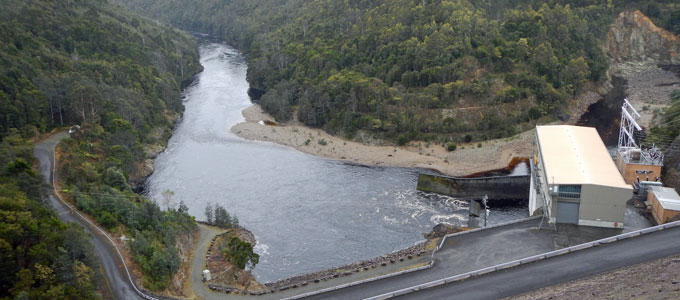
Assess risks early and often
Many project risks can be minimised or mitigated if they are properly anticipated early in the project, and progressively monitored and evaluated throughout the design, development, construction and operational phases.
Identifying key risks early allows companies to manage these risks throughout the project, minimising corporate, technical, environmental and social impacts and their associated costs, including damage to corporate reputation should an unmanaged risk develop into a crisis.
Assessing the risks progressively or in stages can minimise not only the cost of formal evaluation, but also save significant time and costs that could be wasted if a project were to be judged unviable during development.
Sustainability assessment, both formal and informal
Being able to formally or informally assess and comprehensively document risks and actions towards project sustainability offers significant advantages. While it can help guide a comprehensive review of risks, it can also help to identify further opportunities to increase positive outcomes. As well, it provides an easy way to regularly assess progress towards sustainability goals against established baselines, and offers a format for clear reporting both internally and to external funding bodies and stakeholders. In other words, sustainability assessment and reporting is a valuable step in demonstrating a genuine commitment and responsible approach to achieving greater sustainability.
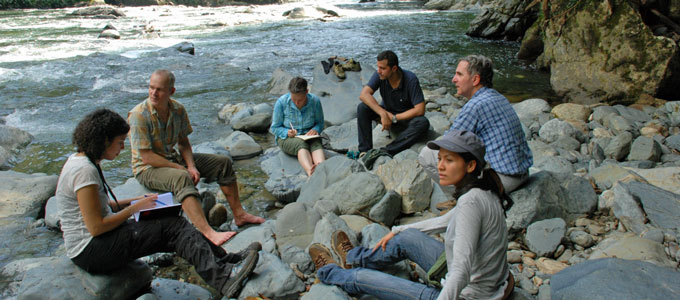
Entura uses a unique, tailored self-assessment tool to help power and water companies and developers understand the risks and opportunities facing their projects and build their capacity to assess, monitor and report on those projects. This tool is based on the assessment criteria identified in internationally recognised guidelines and standards such as the Hydropower Sustainability Assessment Protocol and those used by the International Finance Corporation.
The sustainability scanning tool can be used by an organisation to self-assess a project to identify whether key issues, risks and opportunities have been fully considered and to identify potential gaps needing further attention. This can be done internally following training on how to assess the criteria or undertaken by Entura’s trained assessors.
In addition, Entura’s sustainability scanning tool can be adapted to include other standards relevant to a project or client, or to assess compliance with criteria relevant to a client’s requirements or obligations (such as internal policies and/or permit or concession conditions). It can be used at any stage, or multiple stages, of a project, and for any level of sustainability goal (i.e. good practice or best practice). It can also be repeated over time for the same project to assess ongoing improvement, or to compare projects across a client’s portfolio.
The potential benefits to power and water asset developers of a systematic and thorough identification and management of the full range of project risks include easier access to finance, reduced corporate risks and costs, greater ability to anticipate and respond to stakeholder concerns, and avoidance of delays and problems through the project’s life.
This holds promise for delivering power and water infrastructure projects that are more likely to contribute positively to social, environmental and economic goals both now and into the future.
If you would like to discuss how Entura can assist you with assessing the sustainability of your project or support you to assess and track your own progress towards minimising risks and increasing sustainability, please contact Dr Eleni Taylor-Wood on +61 3 6245 4582 or Shekhar Prince on +61 412 402 110.
About the author
Dr Eleni Taylor-Wood is Entura’s Principal Consultant, Environmental and Social Science. Eleni has 20 years’ experience successfully managing large-scale, complex projects, as well as providing expert advice and independent review for a range of infrastructure and planning projects. She has worked on projects around the world including in Australia, Mozambique, South Africa, Iceland, Colombia, India, Malaysia, China, Solomon Islands, Fiji and Papua New Guinea. Her experience includes environmental and social impact assessment and management, strategic management of wetlands and waterways, feasibility and approvals for new hydropower projects, environmental flow determination and assessment, and sustainability assessments. Eleni is currently one of eleven accredited assessors worldwide under the Hydropower Sustainability Assessment Protocol.
MORE THOUGHT LEADERSHIP ARTICLES
Do your water assets hold unexplored potential?
The right data and analysis could unearth new strategies to get more from your infrastructure, and that’s too good an opportunity to miss.
The most valuable, cost-effective and sustainable power and water infrastructure is that which is thoroughly explored, properly understood, and used to its fullest capacity. This means analysing project data to design and develop solutions that are practical and meet the particular objectives of the project, while always keeping an eye open for innovative solutions that can get even more value from the investment by unleashing its full potential.
When comprehensive and accurate data is cleverly analysed to uncover new opportunities from existing infrastructure, you’ve got a solid foundation for the best business decisions.
Getting power from water assets
Water asset owners can get the very best out of their infrastructure by assessing their existing portfolio for the potential to incorporate renewable electricity generation from technologies such as wind, solar or hydro. In this article, I look at some examples of one possible solution: incorporating mini-hydropower systems into existing water supply infrastructure in cities.
![]()
Water supply networks may offer valuable opportunities to generate renewable energy through mini-hydropower generation. High pressure in water supply pipelines is usually dispersed by pressure-reducing valves or break-pressure tanks. If these devices are replaced by mini-hydropower turbines, the pressure can instead be used to generate clean, renewable electricity, which can help offset costs and reduce greenhouse gas emissions, benefiting a business’s bottom line and carbon budget.
Although the output of individual mini-hydropower systems may be relatively small, if all feasible potential sites within a water supply network are identified and developed, the combined power output can be significant, offering big wins for water managers without compromising water supply to customers. So assessing mini-hydro potential throughout a water supply system can be a rich, and often untapped, opportunity to reap more from existing infrastructure.
Although mini-hydro opportunities may look like a clear win, each water supply system is unique, and there’s no one-size-fits-all solution. Confidence is needed that the project is designed to best capitalise on the particular site characteristics, that the project can generate the right amount of both power and revenue, and that all the project assumptions are based on reliable data. Getting the right data, good analysis and tailored design are therefore crucial for confident investment in the infrastructure and for project success.
Tapping the full potential of Durban’s water supply
Entura’s study of the potential to generate hydropower from the existing water supply networks in Durban, South Africa, offers a methodology for assessing and adopting similar solutions worldwide, and provides an example of how the right data and analysis contributes to project and business success.
To assess the potential for eThekwini (Durban) Water and Sanitation to include mini-hydro systems of between 50 kW and 1 MW into Durban’s existing water supply infrastructure, Entura developed a screening process to identify viable and profitable opportunities.
The first step in the process of assessing hydropower potential in the water supply network was gathering, modelling and calibrating a broad range of data about the water supply system. Generally, existing water supply infrastructure collects pressure data, as this is used for monitoring and controlling the supply network. However, to adequately assess hydropower potential, data was also needed on the water supply system’s flows, pipe sizes, and operating regime. Once all the necessary information was collated, hydropower potential was assessed by calculating flow, head and installed capacity at each site. Next, screening criteria were applied to identify sites with the greatest potential.
A range of factors was considered in assessing the potential of existing water infrastructure assets: load centres, power generation potential, sustainability concerns, network issues, technical and construction challenges, risk assessment and cost-benefit analysis.
The project particularly considered where hydropower could directly supply pumps or be directly connected into the grid, to maximise the value and uptake of the renewable generation. Sites were identified where mini-hydro technology could be supplied in modular units (on a fixed bedframe, or in a standard shipping container) to reduce the time and cost of more traditional construction.
Of more than 150 potential sites, Entura’s screening process returned a list of 47 sites worthy of further investigation, offering a combined installed capacity of 10 MW. More work still needs to be done to fully determine the number of economically feasible sites in the eThekwini water supply network. Of the 47 shortlisted sites, eThekwini Water and Sanitation expects that more than 10 sites will be developed.
Getting more out of Melbourne’s water system
Melbourne Water, an Australian water utility, had recognised mini-hydro’s potential to recover surplus hydraulic energy, generate greenhouse reduction benefits and provide financial returns, without requiring any changes to the operation of the water supply system; without affecting flow, pressure or water quality to customers; and without any increase in operational risk.
Entura assessed the feasibility of each of the six schemes on Melbourne Water’s system to provide the necessary data to determine that the schemes were technically and economically viable. These schemes progressed to implementation and were successfully constructed to Entura’s designs, adding 6.75MW of new clean energy generation into the local electricity distribution network without disrupting water supplies.
![]()
These mini-hydro schemes have significantly contributed to Melbourne Water’s movements towards carbon neutrality and helped it to offset its costs, and Melbourne Water is continuing to explore further opportunities to identify and extract the full rewards from its water infrastructure.
To discuss how Entura can help you uncover and exploit the full potential of your water assets, contact Nick West on +61 408 952 315, Phillip Ellerton on +61 439 010 172 or Shekhar Prince on +61 412 402 110.
About the author
Nick West is a civil engineer with 15 years’ experience, primarily in the fields of hydraulics and hydropower. Nick’s skills range from the technical analysis of the layout of hydropower projects to the preparation of contractual project documents and computational hydraulic modelling. Nick’s involvement in the recently completed Neusberg Hydro Electric Project extended from the first visit to the site where the project layout was conceived right through the development of the project and now into troubleshooting operational issues. As a project manager, Nick has successfully completed projects ranging from hydraulic design for small residential developments to the feasibility study of a cascade of four large hydroelectric projects in Malaysia.
MORE THOUGHT LEADERSHIP ARTICLES
Smarter data management rewards power and water operations
For power and water businesses, information is one of the most valuable assets. But good data you can’t find or use is a wasted opportunity.
Data is most useful when it is integrated and accessible, so that it can help a business make smarter decisions about how to best operate and maintain complex assets for maximum efficiency and return on investment.
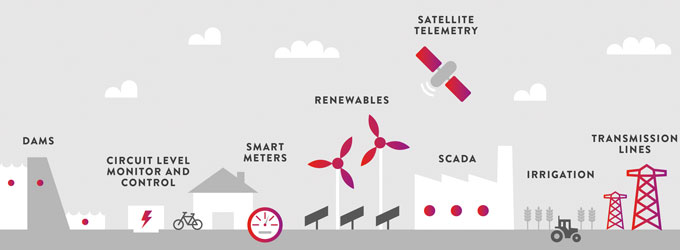
Water managers and power generators typically collect large amounts of information to help them make decisions. Organisations are also increasingly using sophisticated monitoring and communications technologies to make assets ‘visible’ around the clock and remotely, to achieve better results with less worker time, effort and travel.
However, these valuable sources of information are usually stored in disparate systems or repositories, including SCADA, telemetry, GIS, document repositories, field notes and CCTV systems. As well, these systems often predate the Internet, and, as a result, may not be easily or securely accessed, and may be confined to office or station networks.
For this asset data to yield insights and optimise operations, the different sources of information need to be unified and displayed in meaningful ways that add value to the basic data.
Managing data to maximise water flow for hydropower generation
Entura worked with its parent company Hydro Tasmania, Australia’s largest water manager and producer of renewable energy, to tackle this data challenge in relation to the canal system that brings water to Tarraleah, a hydropower station in the central highlands of Tasmania.
Managing the flow of water into the canal system is critical for maximising the available water to Tarraleah (and hence its capacity to generate valuable electricity), as well as maintaining the station’s safety and reliability.
As a canal is not a natural waterway, one might assume that keeping it running at the highest possible water level should be easy and predicable. However, the combined effects of uncontrolled inflows, automatic pumps, and unwanted plant growth in the canals make management of water levels in these canals much more complex.
Water levels can rise unexpectedly, spilling valuable water and potentially damaging infrastructure such as roadways or even the canals themselves.
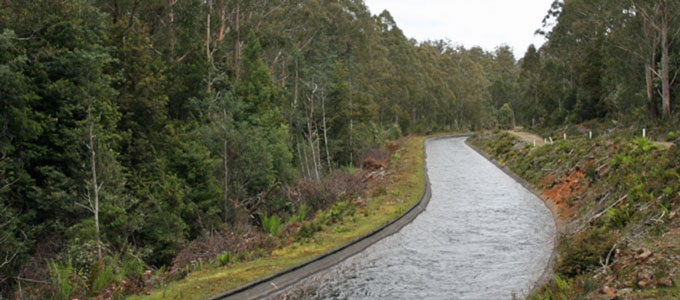
To achieve more efficient and remote management of the water flow into the Tarraleah canal system, Hydro Tasmania aimed to embrace and integrate the latest technology to monitor the live condition of the canals through SCADA, telemetry and manually read data, and make this data more readily available via a single online interface.
The first step towards this goal was understanding the existing limitations of the available information and access to data. GIS provided an excellent overview of the canal system, and was relatively straightforward to use and access via a web browser, but it did not contain any real-time or historical time series information.
The telemetry system contained some information about monitoring sites, but very little about how the data related to other aspects of the system. Also, it could only be accessed from specific computers, and required training and expert knowledge to use. The SCADA system recorded its data to an interface which provided little information about site relativity or purpose, and the interface could only be used within the power station. Some of the more valuable information about the canal system was kept by engineers in isolated document repositories.
These issues acted as barriers to understanding the canal system, hindered the ability to explain it to other people, and made it difficult to find the appropriate data for analysis.
Developing a data solution
To make Tarraleah’s canal information more useful, a data solution had to be interoperable, real-time, secure, synchronised, spatially integrated, contextualised and meaningful, and cost-effective.
| interoperable | To achieve interoperability across multiple devices and operating systems, a web-based platform provided the most suitable and cost-effective solution. A standards-based approach was used in developing the interface, so that the resulting system was able to work seamlessly across devices, with data accessible through a single user interface on laptops, tablets and smart phones. |
|
real-time
|
‘Seeing’ the status of infrastructure in real-time called for the data being displayed to be as current as possible, with each point in the chain of data transfer eliminating any unnecessary latency. Performance between the source of the data and the server was streamlined, and latency between the server and the user device was minimised through WebSockets, a new technology using highly efficient two-way binary connections to transfer data with minimal overhead. This allowed an extremely efficient flow of data (less than 500 ms). |
| secure | It was essential that the design did not introduce security risks for the sake of efficiency. To maximise efficiency and minimise security risks, all data was collected from the source and pushed over encrypted links via proxy servers to a cloud server, where it could then be pushed to the waiting client devices. The cloud provider chosen to store the data was considered one of the more secure in Australia, and one of only a few to feature the highest security certifications required by large utilities and mining companies. The software architecture used best-practice methodologies to isolate the data and keep it secure. |
| synchronised | With data stored in a variety of different systems, and ranging from real-time to historical, multiple systems required synchronisation, which was achieved via a configurable ‘data bridge’ solution using plug-in architecture. |
| spatially integrated | The system collated large amounts of spatial information, from maps or GIS or other business systems, into simple reusable formats for display. This required a versatile web-based mapping platform, with the ability to represent the canal, indicate its water level, represent and describe work orders, and link to other internal systems and information to allow easy visualisation of that item of work. |
| contextualised and meaningful (via metadata) |
With thousands of different data sources under management, the system needed to classify data so that users of the system could easily locate data relevant to their requirements. Meta tree structures were used to classify all the data, allowing hierarchical associations. Each data source was tagged with multiple different types of metadata (such as state, scheme, power station, data owner, site type, status), and grouping structures allowed nested grouping of information, such that users could filter information specific to their needs. The metadata structures could also be used to build dynamic security- sensitive dashboards of data, including any new data added to the system tagged with the appropriate information. This saves the time needed to configure dashboards, and makes sure all relevant data is available to the people that need access to it. |
| cost-effective | The system used technology that Entura had already developed to deliver similar projects for other clients, minimising the need to develop new software. The system itself is ‘cloud’-based, allowing the cost of the infrastructure to be shared among a larger group of customers. |
Simplifying access to data is helping Hydro Tasmania maximise the day-to-day operational efficiency of the Tarraleah canals, make better long-term operational decisions, and reap enhanced returns on investment. Employees now have a live view of the canals on iPads or tablets, enabling them to ‘tune’ the canals for maximum efficiency.
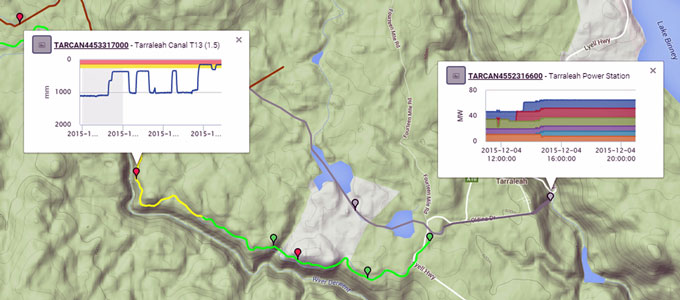
Similar solutions to those developed for this project can be used by power and water asset owners and managers to solve a range of data management challenges, including monitoring remote power stations, forecasting floods, and managing irrigation storages.
When we overcome barriers such as restrictive technologies and lack of metadata, we can make the most of our data. Interlinking multiple sources of information and displaying the results meaningfully leads to smarter decision-making and greater insights into how to operate our assets for maximum efficiency and value.
To discuss how Entura can help you manage your data to reap greater operational rewards, contact Phillip Ellerton on +61 439 010 172 or Patrick Pease.
MORE THOUGHT LEADERSHIP ARTICLES
Getting the bigger picture from your data
Like having a pile of puzzle pieces but no box, are you drowning in data but unsure what it is telling you about your power and water assets?
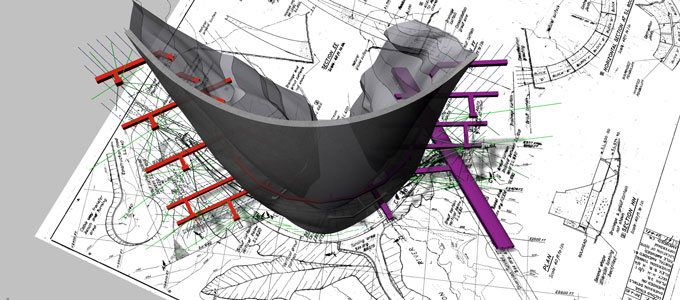
Gathering and interpreting complex data to detect emerging problems is an important aspect of asset safety worldwide. Avenues for collecting data are becoming more sophisticated and accessible and less expensive. We routinely gather data and explore data gaps, data quality and data processing, but how often do we rethink the fundamentals of presenting and communicating data?
For data to be useful, it has to help us diagnose issues and design solutions to keep our assets, our operators, and the public, safe. To do this, it must be understood. Traditionally we have used 2D methods to present data, but forming a picture of an asset from 2D information is very time consuming, often requiring site visits and hours exploring drawings, drill logs and construction photos to understand the complexities of the asset’s design and construction.
Because we have evolved in a 3D world and our senses have evolved to match, the human brain has significant and sophisticated resources dedicated to visual processing and understanding objects in three dimensions. This makes 3D models a naturally efficient medium for rapidly displaying, interpreting and communicating complex information relating to our assets.
Bringing data to life
With advances in technology, we are now able to quickly convert raw data to build 3D models from 2D drawings, and also to animate data in 3D to show change and movement over time. In 3D, assets can be quickly visualised and explored digitally from any angle. This spatial representation allows us to see important things that may otherwise be hidden, or not stand out, in the context of the overall design and layout of an asset.

Features normally hidden can be drawn into a 3D model, such as internal layouts or features under the ground. These can all be independently switched on and off, so that elements critical to the analysis can be considered individually, or contextually against other features to get the bigger picture.
With 3D information at their fingertips – whether on desktops in the office or on smartphones or tablets in the field – engineers, data analysts or field inspectors can better understand assets in significantly less time, reducing costs, complications and misunderstandings.
Time changes everything
To understand our assets, we rarely look only at the here and now. Change is the key to identifying and preventing potential failures or problems – so we must look carefully at past and present data and continue to watch our data into the future. In the past, representing change over time could only be economically achieved in 2D because manually updating 3D models was laborious and time-consuming.
Specialist power and water consulting firm Entura has developed systems that allow data sets (from Excel, Access or other programs) to be automatically processed and displayed onscreen, producing 3D ‘snapshots’ or even animating data directly in 3D. The systems have been developed to allow quick tweaking of model parameters to show different data sets individually or in combination, to exaggerate movements where critical changes are too small to directly detect by eye, or to use colour coding to clearly represent critical parameters.
Perhaps the most significant advantage is that these models can be updated in a matter of minutes rather than days, by individuals with little or no CAD experience, simply by adding new data into the model’s database.
Should seeing always be believing?
Like any tool, 3D representations have some limitations. However, with experience and a little caution, the power of 3D representation can be fully exploited with minimal risk.
Just as 2D drawings can have mistakes or exclusions, 3D models are only as good as the data from which they are built. If incorrect drawings are used to build a model, or the wrong data is used in animations, 3D outputs will not represent the real world but may still look very convincing.
Like any engineering analysis, when 3D models are first produced, a clear review and approval process is needed, and model results must be verified against expected performance to ensure that the tool is robust and can be used reliably into the future.
The real challenges of complex assets
Entura has applied advances in 3D data modelling and presentation to support the management of a range of water and power assets including hydropower stations, water pipelines and dams.
In each of these three examples, 3D modelling delivered a comprehensive picture of system behaviour over time:
- Our use of 3D modelling to explore the movement of turbine plinths at Hydro Tasmania’s Gordon Power Station contributed to a clearer understanding of a pattern of ongoing movement. This helped to identify potential causes and inform future remedial works.
- Developing a 3D model of a steel pipeline made it much easier for an asset owner to understand and make decisions about the extent and possible causes of unwanted movement of the pipeline and its supports. Our model clearly indicated the extent of movement, leading to a targeted engineering solution that directly addressed the root cause of the problem without unnecessary investigation, over-design or delay.
- When we applied 3D modelling to a hydropower dam built on a geologically complex foundation including dissolvable limestone, the resulting model combined the dam’s foundation profiles, underlying geology and leakage rates, and animated 3D water levels in the foundation. The 3D model is helping the owner to quickly and fully understand the data and easily monitor the performance of this complex asset.
In each of these cases, new data can be quickly integrated, allowing easy ongoing monitoring and clearer communication of the current and likely future behaviour of these assets.
With a bit of caution and experience, 3D data presentation tools can offer powerful benefits to asset owners and their stakeholders, putting all the pieces of the data puzzle together to quickly and easily reveal the full picture of an asset’s condition and performance over time, supporting decision-making for cost-effective and timely maintenance and upgrades.
To discuss how Entura can help you get the full picture from your data to better understand and manage your assets, contact Phillip Ellerton on +61 439 010 172 or Shekhar Prince on +61 412 402 110.
MORE THOUGHT LEADERSHIP ARTICLES
Binary states: the rise of the switching controller
The security of an electricity network is threatened by the rise of sophisticated controls on modern generating equipment. These controls lead to complex interactions with the electricity network and must be managed carefully to maintain reliable system security.
Transient stability power system modelling has almost always been the cosy domain of Laplace transforms and smooth, linear controls. The rise and abundance of power electronics in wind turbines and solar PV is changing this and adding a degree of discomfort.
These new controllers switch control modes based on internal and external variables, and as such introduce a new model phenomenon, the switch controller action. A switched controller can be particularly difficult to model accurately as it invariably switches based on an imperfect measurement of a process quantity, coupled with a time delay.
The switch will operate if the process quantity remains out of tolerance for the delay period. The imperfection in measurement can make it hard to accurately predict when or if a switching controller will operate. This can lead to a ‘Schrödinger’s cat’ scenario: the simulation continues past the switching point but we never know whether it should have switched or not, and if it had switched would the result be more or less valid? The simulation could just as correctly be in either state. Argh!

One school of thought is that more accurate and less assumptive modelling practice (such as using electro-magnetic transient simulations) might reduce this problem. However, it is highly unlikely that this form of modelling will deliver all the gains that its proponents expect. Rather, some conditions are likely to still give rise to the switching uncertainty, even with a much higher modelling cost.
Confronted with this uncertainty, how can we ensure that the modelling provides a useful insight into the limits of system operation? We’ll look at three scenarios: generator integration, system model validation, and system planning.
Generator integration
For generator integration, we typically define a set of boundary conditions and extreme event scenarios and determine whether the new generator is able to be connected within the system technical standards. This approach almost always ensures operation of the switching controllers that protect a generator from abnormal conditions, and there is no ambiguity of outcome. All good, job done? Well, no!
What if a slightly less severe system event leads to a condition in which the switching controller doesn’t activate but really should have? That’s a problem. This uncertainty requires us to define a much more complex set of scenarios to assure ourselves that a generator will comply with the technical standards.
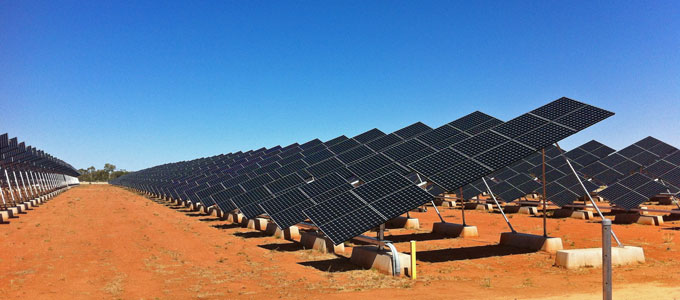
System model validation
To validate system models, we generally measure responses from generating units and the system, and this tells us how the system and the generating units have behaved. So far, so good. Although, we don’t always know the severity of the instigating fault with any certainty, and this degree of freedom can open the dreaded window of switching controller uncertainty. Again, two possibilities exist in the model space: switching or not.
We know which is right, but is it fair to assume that the model inaccuracy suggested by comparison is entirely due to the generator with the switching controller? Um, well, probably not, but sometimes, yes. This is perhaps more difficult to resolve because it’s hard to unpick the sum of small inaccuracies in the system model from the clearly aberrant behaviour of the switching controller since the aberrant behaviour may be due to those summed inaccuracies.
System planning
The number of scenarios explored in system planning studies leads us to try to ignore the contributions of single generating units, or at least to assume accuracy in those contributions. Limits to system dispatch are established based on breakpoints such as transient stability and damping ratios. But how do we know we’re studying the correct, most onerous events? Severe events will always lead to switching controllers operating. Less severe events lead to hit-and-miss operation and potentially less stable system operation at potentially lower flows, so they must become part of our planning simulation considerations.
The rise of the switching controller and the uncertainty that it brings is a worrying development , with no easy work-around. Being aware of the conundrum should lead to accounting for it in some way. When the problem first arises during connection studies, the results at this stage can inform validation tests to increase the certainty of the modelling of the switching controller. Understanding the sensitivity of the controller to voltage and frequency variations and imbalance should provide an appreciation of the need for more advanced modelling, or not.
Switching controller uncertainty demands due consideration from network simulators lest the security of the power system is compromised and we all suffer.
If you would like to find out more about how Entura can help you adapt successfully to the rapidly changing market for electricity generation and energy services, contact Donald Vaughan on +61 3 6245 4279.
About the author
Donald Vaughan is Entura’s Technical Director, Power. He has more than 25 years of experience providing advice on regulatory and technical requirements for generators, substations and transmission systems. Donald specialises in the performance of power systems. His experience with generating units, governors and excitation systems provides a helpful perspective on how the physical electrical network behaves and how it can support the transition to a high renewables environment.
MORE THOUGHT LEADERSHIP ARTICLES
Saving lives and protecting assets by reducing arc flash hazards
An arc flash is one of the greatest dangers electrical workers face, with potentially tragic consequences.
Each year, workers worldwide are killed or injured by arc flash – a type of electrical explosion (like a short circuit through the air) that can produce a deadly force equivalent to detonating a bomb.
As many as 10 arc flash incidents occur every day in the USA. In Australia, two electrical workers were killed in 2015 when an arc flash occurred in the power supply to a shopping centre. In mid-2015, another two Australian mining workers were seriously injured by an arc flash underground.
Being injured by an arc flash is, thankfully, not much more common in the developed world than being hit by lightning, but the injuries can be similar. Arc flash accidents can cause burns (often very severe, and most commonly to hands and face), injuries to the airways from toxic gases, damage to the eyes and ears from intense light and sound, and impacts from being thrown or being hit by flying objects or shrapnel.
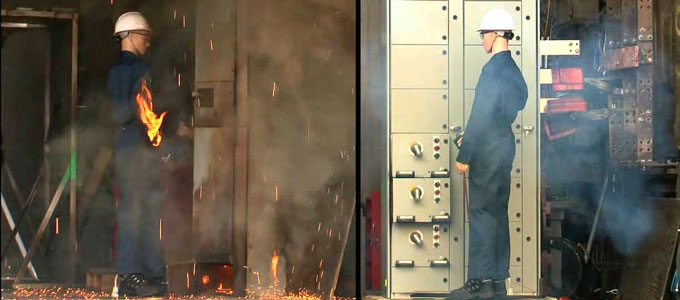
As well as the serious risks of injury or death that an arc flash hazard poses to the safety of workers and the public, it can also cause substantial physical damage to equipment and infrastructure, and prolonged outages or restricted power supply. And these impacts all add up to sizeable costs.
Including arc flash in the overall risk management strategy
To protect against the costly consequences of arc flash hazards, any owner or operator of electrical assets needs to incorporate the potential for arc flash events in their overall risk management strategy.
Wherever electricity supply is required, faults and arc flashes can occur, potentially at any time. This means that arc flash can never be completely eliminated in electrical transmission and distribution substations. However, there are known scenarios of greater risk, including times when the electrical system is under stress due to surges or faults; during maintenance; during switching or racking of the circuit breaker from the switchboard compartment; when asset condition is in decline; or when working with older types of switchgear, which typically have no arc fault containment features.
Calculating the level of risk
To understand the arc flash risk for a substation, calculations are performed to estimate the potential energy of an arc flash incident and to estimate the arc flash boundary (the distance from a live part from which a person could receive a second-degree burn). Fault clearing times are also calculated, as the time it takes to clear the fault is directly related to the energy of an arc flash. The fault clearing time depends on various factors such as the type of protection in place and the location of the fault, so a detailed analysis is required for individual sites to determine the arcing time.
Calculations are usually based on two North American standards, IEEE 1584 and NFPA 70E. Although neither of these standards applies fully to Australian workplaces, the combination of these two standards has become the de-facto local standard as no Australian standard currently exists. This lack of clear guidance means that every owner or operator of electrical assets needs to be confident that they are making the right risk management decisions by understanding current industry best practice.
Once these calculations have been made, the risk level of individual assets can be determined based on the likelihood of an arc flash (derived from factors such as asset condition and exposure of workers) and its consequence (derived from worker safety, equipment damage and loss of supply).
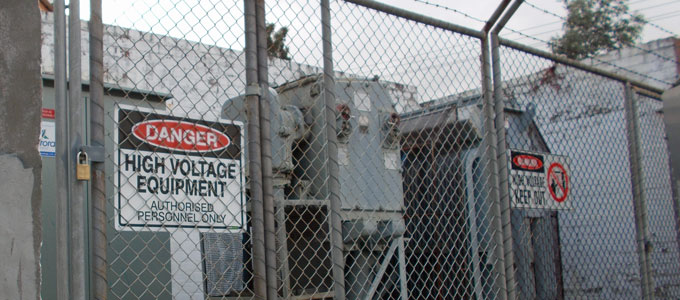
Lowering arc flash risk without breaking the bank
Our ultimate preference is to prevent an arc flash from occurring at all, but the inherent risks in an electrical asset may make full eradication difficult. Where the risk of arc flash is high, a combination of appropriate controls should be used to lower the risk to a more acceptable level.
Although personal protective equipment (such as an arc flash suit, or a face mask and gloves) is a necessary and relatively easy protective measure to implement, PPE will not protect a worker from impact-related injuries, nor protect equipment or reduce outages, so it is important to also fully investigate some of the higher rungs of the hazard reduction hierarchy of controls.
Other cost-effective control measures to mitigate arc flash hazards include increasing employee awareness and skills, reducing employee exposure, and reducing arc flash energy.
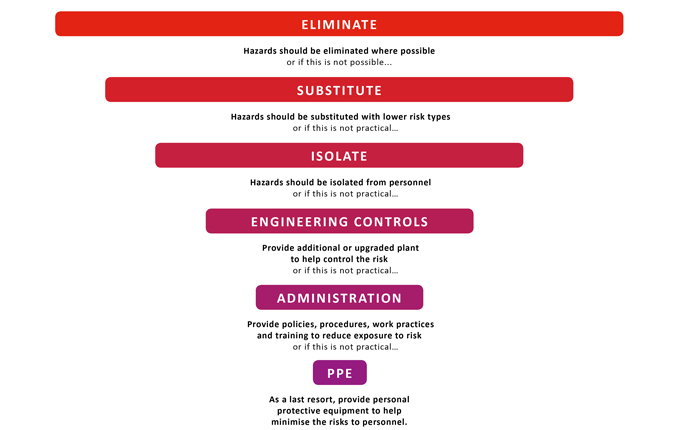
Given that arc flash incidents are most likely to occur when workers are present and are often caused by human error (such as dropped or mislaid tools or incorrect operation), it is important to make employees aware of the hazards and maintain employee skills through training and competence assessments.
Another easy way to improve worker safety is by limiting the exposure of workers by undertaking switching and racking remotely with no personnel near the switchgear.
A very effective engineering control to reduce the risk is by reducing the arcing time, which reduces the energy of the arc flash. This can be achieved by installing arc flash light-detection systems combined with fast-acting earthing switches. The light detection will pick up an arc flash very quickly (in around 4 milliseconds) and, by applying a three-phase connection to earth, the arc will be extinguished.
Keeping our own workers and assets safe
As part of Hydro Tasmania, Australia’s largest producer of renewable energy, Entura has been involved since 2012 in studying arc flash hazards on an extensive portfolio of electrical equipment to better understand its consequences. As asset owners, we appreciate the need to keep our workers and assets safe through achieving the best risk mitigation for the available investment of funds. We’ve brought this together with up-to-date knowledge of industry best practice and trends to assist clients develop safe and cost-effective strategies to confidently manage the risk of arc flash throughout their electrical asset portfolios.
To discuss how Entura can work with you to fully assess and address your electrical risks for greater worker safety and reduced outages, contact Patrick Pease.
MORE THOUGHT LEADERSHIP ARTICLES
Using risk assessment to guide dam safety upgrades
Whether your focus is on a single dam or a whole portfolio, a risk assessment process helps you decide how best to intervene, and when, to get the maximum improvement in safety from your investment.

Using a risk assessment process to assess a whole portfolio of dams helps asset owners prioritise their limited resources for safety upgrades. Richard Herweynen, Entura’s Principal Civil Engineering, introduced our portfolio risk assessment program in his article ‘Dam safety: protecting lives and driving efficiencies’. Now we explore how a similar process can be used for a single dam to guide investigations, prioritise the order of a staged upgrade, and manage safety risks during construction, using the example of Hydro Tasmania’s Rowallan Dam.
The challenges of an ageing dam
Rowallan Dam is a 43m-high earth and rockfill dam built in the late 1960s, with two embankments on either side of a spillway located on a knob of very hard quartzite. The reservoir plays a key role in Hydro Tasmania’s hydropower system: it is a large storage at the top of the catchment and operates over a large range of water levels, capturing the high winter flows and then releasing them over the summer months through a cascade of five power stations downstream.
A dam portfolio risk assessment (PRA) completed by Entura in 2006 had identified Rowallan Dam as one of the potentially higher risk dams in Hydro Tasmania’s portfolio, with a number of suspected but not confirmed deficiencies. The potential deficiencies included a relatively high probability of a piping failure (internal erosion of the earthfill) as the filters were suspected to not meet modern standards and the dam had suffered a piping incident adjacent to the spillway walls when it was first filled.
As well, the PRA identified other potential deficiencies including questions regarding the spillway capacity, liquefiable foundations, potential for landslide hazards at the reservoir rim, structurally deficient spillway walls, and a limited capacity for dewatering.
With multiple potential deficiencies such as these, a range of challenges arise: Which deficiencies do we tackle first? Do we need to address all the deficiencies? To what level do they need to be addressed? How quickly should we address the deficiencies? And how do we justify to the business a large capital expenditure that will not generate any additional returns?
Reducing uncertainty
The original scope of the PRA was to assess the dam portfolio based only on the existing available information with the exception of preliminary dam-break modelling and consequence assessment. To allow the PRA to be completed within a reasonable timeframe and budget, this inevitably meant that significant gaps in our knowledge of the dams were filled with assumptions and best estimates.
A very targeted investigation program was then required to fill the gaps in our knowledge of Rowallan Dam’s particular possible failure modes and to prepare a fully justifiable business case. Entura led the investigation and concept development phase, working closely with external parties. The necessary investigations included:
- geological mapping of the potential landslide features (to determine whether they were in fact glacial features and not of concern)
- investigation into the core, filters and rockfill of the embankment (to confirm their properties)
- more detailed dam-break modelling (to confirm whether the original estimates of consequences of failure were correct)
- drilling of the left embankment foundation (to demonstrate whether liquefaction was a significant concern)
- full modelling of the flood hydrology (to confirm the flood risk)
- structural analysis of the spillway walls supporting the embankment on either side of the spillway chute
The spillway wall failure mode had not been identified in the PRA and was included in the investigation program to demonstrate that it was not a concern; however, it turned out to be the failure mode with the highest probability, and became the highest priority of the upgrade program.

Developing the upgrade program
When the specific investigations for Rowallan Dam were complete, the risk assessment for the dam was revised. The revised risk assessment determined the potential failure modes (in order of probability) to be failure of the spillway walls; piping along the spillway walls; piping through the upper part of the embankments; piping through the lower part of the right embankment; and overtopping of the dam during an extremely rare flood (rarer than a 1 in 10 000 year flood).
Developing an integrated, effective and progressively implemented solution that would not increase the dam safety risks during construction was a major challenge. Many alternatives for the outlet works, spillway augmentation and spillway walls were developed by Entura for resolving each dam safety risk while considering the construction flood risks and overall project risks. This allowed Entura to find the right package of solutions to minimise the risks as well as the capital outlay. The ultimate solution included:
- increasing the monitoring of the spillway walls: To provide early warning of a possible failure, inclinometers were telemetered and alarmed. Monitoring picked up a possible deterioration in one wall, which was temporarily propped until a permanent solution could be implemented.
- increasing the dewatering capability of the dam: The riparian valve was replaced with one of greater diameter, and the controls of the turbine relief valve were modified to allow emergency bypass. This increased dewatering capacity was critical to managing flood risks during the later stages of construction and improved the ability to control any potential piping failure.
- strengthening the spillway walls on the inside of the existing walls: This approach incurred less risk of overtopping during construction than if the walls were strengthened on the embankment side. The replacement walls were designed to accommodate higher future discharges.
- installing modern, compliant embankment core filters: Installing these filters would protect the embankment from piping, but required major localised excavation adjacent to the spillway walls, including from the embankment crest to foundation, and reconstruction of the top seven metres of the embankment.
Lower risks, greater compliance
The major upgrades at Rowallan Dam have now reduced the dam’s safety risks. By considering a wide range of upgrade options and demonstrating that the selected option would significantly reduce the risk of failure through very targeted capital works, the Rowallan Dam risk assessment played a key role in developing a sound business case to demonstrate that the capital investment was both necessary and efficient – for a safer dam, both now and long into the future.
To find out more about how Entura can work with you to assess and remedy the safety risks of your dams or other water infrastructure assets, please contact Paul Southcott on +61 3 6245 4145, Phillip Ellerton on +61 439 010 172 or Shekhar Prince on +61 412 402 110.
About the author
Paul Southcott is a specialist civil engineer at Entura. He has more than 28 years of professional expertise in civil and dam engineering, as well as expertise in geotechnical, foundation, structural, hydraulic and hydropower engineering. Paul’s dam engineering experience spans geotechnical and hydrological investigation; feasibility and options studies; concept, preliminary and detailed design; engineering assessment, consequence assessment and risk assessment; safety reviews; monitoring and surveillance; and emergency planning. He has particular expertise in dam risk assessment and project managed the Hydro Tasmania portfolio risk assessment of 55 large dams, Southern Water’s 18 dams and most recently SA Water’s 18 large dams. He was the technical leader for the Rowallan Dam upgrade project overseeing all aspects of the project including the detailed design of the spillway wall upgrades.
MORE THOUGHT LEADERSHIP ARTICLES
Prioritising safety at Rouna 2 hydropower station, PNG
As the saying goes, ‘safety doesn’t happen by accident’.
The measures taken to address safety risks at the underground Rouna 2 hydropower station in Papua New Guinea offer a timely reminder of the basic requirements for adequately managing safety risks and protecting workers when upgrading older hydropower stations or when developing new ones.
The upgrade of Rouna 2 – including adequate exits, flood protection, fire and smoke detection and control, and emergency management – illustrates that much more than just the main generating equipment needs attention to adequately identify and address safety risks and hazards in a hydropower station.
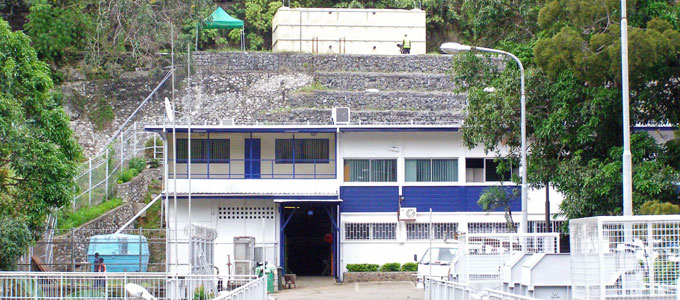
A run-down, risky hydropower station
Rouna 2 is one of four stations operating in a cascade down the Laloki River. It has five 6 MW vertical-axis hydro units from the late 1960s housed in an underground machine hall. Although only a small station, Rouna 2 has all the complexity and requirements of a much larger station.
By the time specialist power and water consulting firm Entura began working on the project to upgrade Rouna 2, the power station was old, run down by years of hard work, and was presenting its owners and workers with safety risks typical of many older hydropower stations.
The initial project concept was simply to refurbish the machines, but it quickly became clear that repairing or replacing only the generating units wasn’t going to be enough to sustain the power station’s operation, and that safety concerns needed to be urgently remedied.
Upgrading station evacuation
The Rouna 2 power station originally had only one access and exit route for the underground machine hall via open stairs in a 200 metre-deep vertical access shaft. No alternative emergency exit route was available. As the access shaft also contained all the power and control cables, it further intensified fire and safety risks.
To improve evacuation, a new emergency escape route was created via new ladders and platforms down the tailrace surge shaft to the tailrace tunnel, which normally carries water out of the power station.
Within the machine hall, the emergency escape route was made safer by being enclosed and made fire resistant, and kept smoke-free by a fan started automatically. Smoke hoods (emergency evacuation masks that reduce the risks of inhaling toxic smoke and gas) are provided to offer temporary protection for personnel needing to cover large distances to the start of the safe escape route.
To provide adequate lighting and signage for emergency escape, the DC-powered emergency lighting was upgraded. Evacuation alarms were improved, including strobe lights as well as audible sirens.
Improving flood protection
An underground power station surrounded by huge quantities of water under high pressure is particularly vulnerable to flooding. Rouna 2 had poor flood protection and dysfunctional evacuation alarm systems.
The evacuation alarms were upgraded and linked to flood detection within the machine hall. An automatic flood protection scheme was implemented to shut down the underground generating units and close the surface intake gate.
Improving fire and smoke detection and control
Hydropower stations are at risk of fire because they are full of electrical equipment. The Rouna 2 station had no fire detection system and minimal fire protection systems, so urgent attention to all fire measures was needed.
New fire panels and a new fire detection system were installed, as well as a new fire-fighting water supply, fire hydrants and hose reels. Sprinklers were installed in the access shaft and the machine hall. Older carbon-dioxide-based fire-protection systems for generator fires were replaced with water-spray systems. Fire doors were rehabilitated to close automatically.
Implementing an innovative new ventilation system
Ventilation systems in hydropower stations seldom provide any adequate smoke removal, despite the dangers of smoke inhalation. Technical innovations in the upgrade of Rouna 2’s safety systems included methods for smoke control integrated with the station’s ventilation system and its new fire panels and doors.
We upgraded the ventilation and smoke exhaust system by automatically reversing the ventilation fans during a fire, so that they exhaust smoke from the machine hall to the surface, and draw fresh air back down into the machine hall. At the same time, automatic fire doors close within the machine hall.
A safer power station for a safer future
Although new, large hydropower developments typically embrace complex and comprehensive safety standards and features, around the world many older stations are seriously deficient, presenting hazards that urgently need to be identified and resolved. Through our improvements to its ancillary services and safety systems, Rouna 2 is no longer in this extreme risk category.
However, adequate safety facilities are not the only requirement to maintain a safe hydropower station. Workers need the knowledge to maintain safety features, equipment and systems, and the skills to use them effectively. Entura has provided contract operators and station managers to work alongside local employees to help improve emergency and crisis management systems, provide local training and build capacity to ensure that Rouna 2’s future promotes a safer power station and safer workers.
To discuss how Entura can assist you with assessing hydropower station risks or developing a hydropower safety program or upgrade, please contact Shekhar Prince on +61 412 402 110.
This article was written by Ambrose Canning, Entura’s Principal Consultant, Mechanical Engineering (retired 2025).

